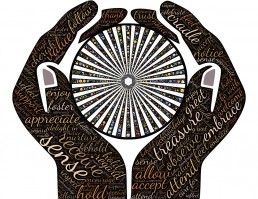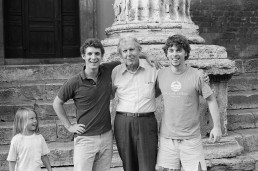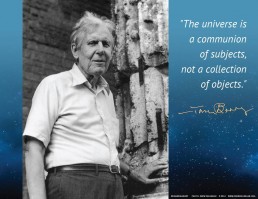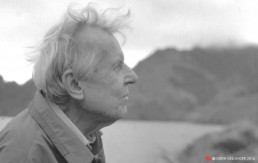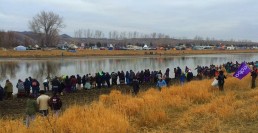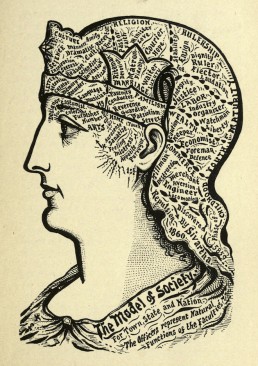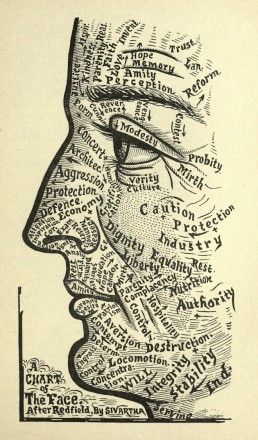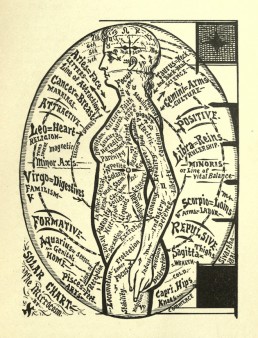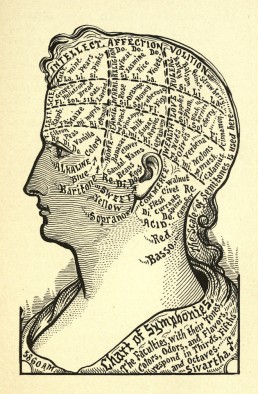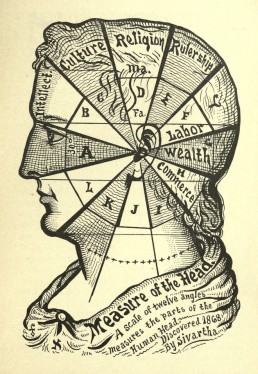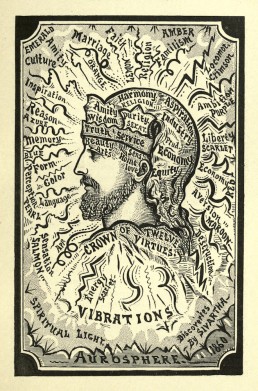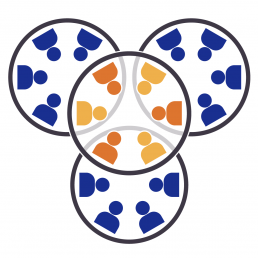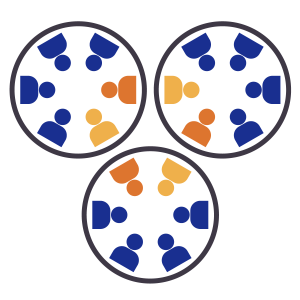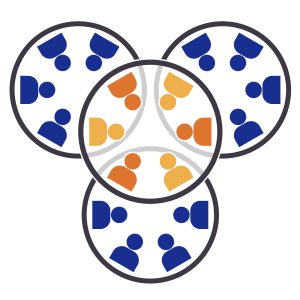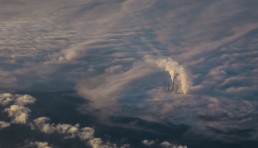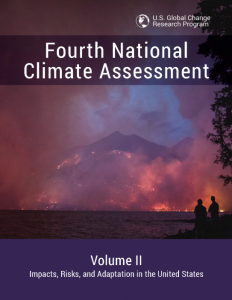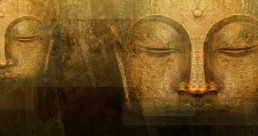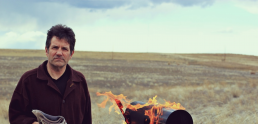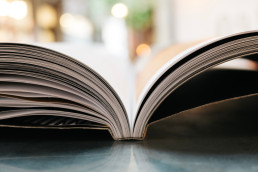Roots and Evolution of Mindfulness
Roots and Evolution of Mindfulness
Before reading this article, listen to a spoken introduction with Joel and Michelle Levey.
When we first began our study, practice, and research of mindfulness in the early 70s, we knew fewer than a handful of people who were involved in this path of practice. As our practice and research matured, we began to develop mindfulness-based programs in medicine, higher education, and business. In the mid-70s and early 80s, we knew of no one else bringing these methods into the mainstream. Gradually over the years, a groundswell of insight, interest, and research has emerged, creating a host of benefits and challenges, clarity and confusion, that inspires and confounds the modern mindfulness movement.
Our intent in composing this brief article is to offer an overview of some key perspectives on mindfulness. For people relatively new to mindfulness, it’s helpful to have a clearer understanding of its roots, shoots, and trends in order to access the deeper meaning, purpose, and value of this vital practice.
To the degree to which we wake up with mindfulness and learn to open our hearts and minds, the walls of our conventional, familiar, consensus view of reality become more clear, open, and transparent, revealing a deeper, vaster, multidimensional, and interrelated view of the actual nature of reality than we have previously imagined. This is why what we call mindfulness meditation is traditionally known as Vipassana, or ‘Insight Meditation.’ Mindfulness gives us access to insight and the direct, non-conceptual intuitive wisdom that liberates us from our misconceptions regarding the nature of reality and the true nature of ourselves.
You Reading This, Be Ready
by William Stafford
Starting here, what do you want to remember?
How sunlight creeps along a shining floor?
What scent of old wood hovers, what softened
sound from outside fills the air?
Will you ever bring a better gift for the world
than the breathing respect that you carry
wherever you go right now? Are you waiting
for time to show you some better thoughts?
When you turn around, starting here, lift this
new glimpse that you found; carry into evening
all that you want from this day. This interval you spent
reading or hearing this, keep it for life—
What can anyone give you greater than now,
starting here, right in this room, when you turn around?
While mindfulness is certainly widely adopted and practiced, our experience is that surprisingly few people are aware of its deep roots and origins in wisdom traditions—its more profound meanings, value, highest implications, and most intriguing applications. Our intent here is to offer insight, inspiration, and illumination on these facets of the jewel of mindfulness as it shines out in our modern times.
Roots of Mindfulness
Mindfulness as a technical term has its historical origins in the ancient Pali word sati used by the Buddha in his teaching on mindfulness over 2600 years ago. Sati literally translates as “memory”- as in remembering what you are paying attention to in the present moment of awareness. In an attempt to meaningfully translate treasured Buddhist meditation manuals, the English translator Rhys Davids was the first to offer an English translation using “mindfulness” in 1881, and, by 1910, mindfulness had become the generally accepted norm. Davids was inspired to use the term “mindfulness” by its use in an Anglican prayer that says, “Always be mindful of the needs of others.” Interestingly, from this initial choice to translate sati as mindfulness, there is an implication that mindfulness is also akin to a newly emerging meme of kindfulness which reminds us that we pay attention to what we care about. The widespread use of the term ‘mindfulness’ has endured to this day where we find the meaning of mindfulness continuing to be adapted, as it is incorporated into common use with an ever expanding variety of mindfulness-based interventions (MBIs) that are emerging within health science, corporate, and high-performance arenas of contemporary culture.
Unfortunately, the meaning of the term mindfulness also is becoming increasingly misconstrued through its association with deep relaxation without mindful awareness, creative imagination visualizations, getting a good night’s rest, ‘mindfulness chairs,’ mindful men’s clothing, or even mindful mayonnaise—all of which have little or nothing to do with the meditative practice of mindfulness. Some respected teachers in the realm of mindfulness have gone so far as to say that the word ‘mindfulness’ has all but lost its original meaning.
Roots of the Modern Mindfulness Revolution
While the teachings of mindfulness practice have endured for millennia since the time of the Buddha, the contemporary “mindfulness revolution” was propelled into modern times by the colonial thrust of the British Imperial Army invading and conquering the Buddhist kingdom of Burma in November 1885.
For centuries the Burmese people regarded their king as ‘the protector of the Dhamma‘- the liberating teachings of the Buddha which, when taken to heart, have the power to free us of our delusions and confusions by opening our wisdom eyes to directly discern things as they truly are. Mindfulness is the primary practice of these liberating teachings, and its power lies in quieting the conceptual dualistic overlay of thoughts to allow direct insight into the true nature of reality to arise clearly in the mind.

As the Brits marched into the capital city of Mandalay, the Burmese people looked on in horror as their beloved king and his family, surrounded by British soldiers brandishing rifles, were taken from the royal palace and unceremoniously loaded in an oxcart that carried them to a waiting steamship that would carry them into exile. The royal palace was then transformed into an officers’ club for drinking, dancing, and socializing!
A profound wave of concern rippled through Burmese society giving rise to an unprecedented cultural revolution that activated the Burmese people to protect the precious and vulnerable teachings of the Dhamma. Foremost among these cherished teachings was the practice of mindfulness.
Up to this time in Burma and throughout Southeast Asia, the teachings and practice of mindfulness had been mostly held within the monastic community of ordained monks and nuns, while the religious practices of the lay community focused primarily on generosity and giving of alms to generate spiritual merit, with the assumption that lay people were unlikely to actually realize enlightenment through practicing meditation.
With the advent of the British invasion and the king’s exile, visionary teachers within the monastic community, lead by the monk Ledi Sayadaw, and the householder Saya Thetgyi spread the practices of the Vipassana tradition, from which mindfulness is derived, throughout secular society. In the decades that followed, a contemplative cultural revolution spread throughout Southeast Asia giving rise to a renaissance and wide diffusion of mindfulness teachings with both the monastic and lay communities. (Braun, 2014)
Three Main Streams of Mindfulness Practice
The next wave of mindfulness revolutionaries appeared as droves of globe trotting spiritual seekers, peace core volunteers, government spooks, and mind scientists who traveled to Asia in the 1960s and 70s intent on seeking out enlightening teachers, wisdom teachings, and liberating contemplative technologies. Word of inspiring teachers and meditation retreats quickly spread through the social networks of those times drawing early waves of contemplative pilgrims to the monasteries and meditation centers of Southeast Asia to get their first immersive and transformative experiences of intensive mindfulness meditation practices, which were often presented in 10 day silent retreat formats or longer even more intensive retreats.
Through the influence of many of these early adopters of mindfulness, three principle streams of mindfulness practice have flowed into modern Western culture.
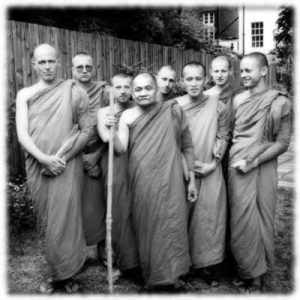
Insight Meditation: One stream of mindfulness practice came to the West through the teachings of Mahasi Sayadaw, U Pandita, Ajahn Chah, Buddhadāsa Bhikkhu, and other Thai and Burmese teachers of the “forest monastery” tradition which emphasized a blend of mindful breathing, noting and noticing of the nuances of momentary changing experiences, mindful walking, mindful eating, integrating mindful awareness into every activity, and resting in open clear awareness without grasping at any momentary experience. This lineage of mindfulness practice is widely referred to as “Insight Meditation” and was introduced to the West primarily through the influence of Jack Kornfield, Sharon Salzberg, and Joseph Goldstein who co-founded the Insight Meditation Society in Barre, Massachusetts in 1975. Kornfield later also co-founded the Spirit Rock in Marin, California in 1988 with a number of other teachers.
The wise and creative teachings offered at these two centers alone have inspired tens of thousands of people over the past 40+ years, giving rise to hundreds of other practice centers around the globe, and playing a significant role in inspiring the global diffusion of mindfulness practice into higher education, medicine, business, military, government, sports, and other arenas of modern life. Within this stream many other respected teachers, including Anagarika Munindra, Dipama, Ajahn Amaro, Ajahn Sumedho, Thannasaro Bhikkhu, Taungpulu Sayadaw, and Dr. Rina Sircar, to name but a few, have deeply inspired the diffusion of mindfulness teachings throughout North America, UK, and Europe.
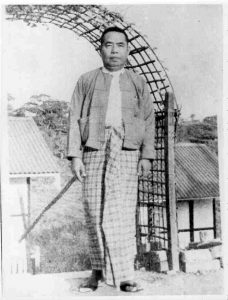
Vedana Vipassana: The second stream came to the West from the Burmese teacher U Ba Khin, the Accountant General of Burma, who founded the International Meditation Society in Rangoon in 1952 where he attracted the attention of many international students and teachers. As a lay practitioner and respected lineage holder from Saya Thetgyi of the vedana vipassana tradition of mindfulness practice, and also a respected accountant, U Ba Khin accepted the invitation from the Burmese government to assume the role of Accountant General and to assume leadership in order to route out the corruption in the Burmese Treasury Department. U Ba Khin accepted this appointment with two conditions. First was that one wing of the Treasury Department would be transformed into a meditation hall where members of his staff could come and meditate at any time. Second, was that everyone on his staff in the Treasury Department would train with him and participate in at least one intensive ten-day silent Vipassana style mindfulness retreat. As U Ba Khin said, “I refuse to work with incompetence.”
U Ba Khin’s style of mindfulness practice focused on developing concentration through single-pointed concentration on the breath, and then the close application of mindfulness by scanning or “sweeping” mindful awareness slowly through the body from the top of the head to the toes, over and over again, for up to 20 hours per day, leading to a profound state of vivid mental clarity and the purification of embedded congestion within the gross and subtle body. In this austere and intensive style of practice there is only sitting meditation, with no mindful walking, yoga, mindful eating or other practices at all.
In his later life, U Ba Khin passed his legacy of teachings on to seven teachers including S.N. Goenka (a Burmese businessman who is widely known in the West), Robert Hover (a former U.S. aeronautical engineer), Ruth Denison (a German pioneer in embodied movement practices), and John Coleman (a former British MI6 agent), all of whom carried these liberating teachings back to North America and Europe and around the globe. In particular, Goenka’s approach to teaching mindfulness has become very popular and widely available in the West and around the world, especially as the teachings and retreats are offered free of charge. After retreats, the students are encouraged to make donations and “play it forward” to freely fund retreats for future students.
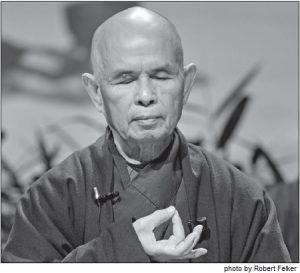
The Order of Interbeing: A third stream of mindfulness teachings came to the West in part due to the U.S. invasion of Vietnam, where the monk Thích Nhất Hạnh and his community were practicing and teaching mindfulness as an integral practice in their non-violent peace work amidst the terrors of the war. As the war raged on and many of his colleagues were brutally murdered, Thay, as his students call him, took refuge in France where he founded the Plum Village international Meditation Center and the Order of Interbeing. There, he continued to teach his unique and highly accessible form of mindfulness which emphasizes the practice of mindful breathing, mindful walking, and the repetition of meditation phrases or gathas, synchronized with inhalation and exhalation. To develop deeper ease and continuity of meditation, words such as calming, smiling and arriving are used to help relax and focus the mind and quell the tendency toward discursive thoughts during meditation practice. Today there are hundreds of centers around the globe teaching Thay’s style of mindfulness practice.
One of Thay’s gifts is his encouragement to bring a gentle, heartfelt, compassionate inner smile to mindfulness practice,—“smiling to our sorrow”—in order to realize that “we are more than our sorrow.” This practice of gentle smiling has influenced mindfulness instruction and how it is often introduced and practiced in the West. Most importantly, his teachings on interbeing—the interconnection of all Life—and the illusion of a ‘separate self’ are fundamental for those who follow this teacher.
Beyond these three primary streams, there are other streams, lineages, and teachers who emphasize a variety of aspects or approaches to the practice, and there are also many teachers and centers that weave together teachings and practices drawn from these different traditions.
Kindfulness | Mindfulness Blossoms As Compassion and Lovingkindness
Being present with kindness and compassion
is being mindful.
– Jon Kabat Zinn
As the practice of mindfulness deepens and matures, it embraces and is responsive to the needs, not only of ourselves, but of all beings who suffer and experience vulnerability or injustice in their lives, society, and world. As many of the foremost Western mindfulness teachers have matured in their practice, the nature and tone of their teachings have warmed, shifting from a more austere focus on “bare attention” and taking on a more compassionate tone that encourages their students to blend mindful awareness with a merciful, warm hearted approach to their mindfulness practice.
It is becoming increasingly more common for mindfulness teachers to expand their studies and practice of mindfulness to draw inspiration from traditions that give greater emphasis to heartfelt qualities such as gratitude, genuine friendliness, compassion, lovingkindness, self-compassion, and engaged social justice action, into mindfulness education and training. This heartwarming, compassionate impulse may be integrated into mindfulness practice simply as a gentle, merciful, inner smile as one musters the courage to look within and mindfully, whole-heartedly embrace the tension, apprehension, sadness or rage found there. Or it may be intentionally cultivated as a robust practice of meditation such as lovingkindness—or metta—wishing well to ourselves, others, and all beings; or generating radiant compassion regarding and embracing the presence of suffering in our lives, relationships, and world; or activating an explicit dedication to practicing mindfulness with an intention of realizing one’s true nature and highest potentials for the benefit of all beings.
As mindfulness matures into kindfulness (Braum, A. 2016), on a societal level, we are witnessing the emergence of more university programs that explicitly include compassion science and encourage compassion-based practices as part of their curriculums. Among the most respected programs in today’s world are:
Stanford University’s CCARE Program- Center for Compassion and Altruism Research and Education http://ccare.stanford.edu);
Mindful Self Compassion- self-compassion.org/the-program/
The Greater Good Science Center- connected with Stanford and UC Berkeley http://greatergood.berkeley.edu
University of Wisconsin’s Center for Healthy Minds- (http://www.investigatinghealthyminds.org/cihmDrDavidson.html);
Mind and Life Institute- https://www.mindandlife.org/
Max Planck Institute’s Human Cognitive and Brain Science- ReSource Program (https://www.resource-project.org/en/home.html )
Mindfulness, Collective Intuitive Wisdom, & Human Flourishing
The world we have made as a result of the level of the thinking we have done thus far creates problems that we cannot solve at the same level of thinking (i.e. consciousness) at which we have created them… We shall require a substantially new manner of thinking if humankind is to survive. – Albert Einstein
Could it be that the global surge of interest in mindfulness is an evolutionary impulse perfectly responsive to the challenges of these times? From our many years of practice, research, and work bringing mindfulness to organizations and communities around the globe, it seems that the greatest value and most highly leveraged application of mindfulness may be to follow Einstein’s advice. How? By equipping individuals and innovation teams with the skills necessary to refine the level of their personal and collective consciousness in order to access the deeper intuitive wisdom necessary to bring forth breakthrough solutions to complex global problems.
As the key to accessing the most-subtle dimensions of intuitive wisdom, the greatest value of mindfulness in this age may be in its capacity to liberate us from our collective ignorance by opening our minds to the wisdom we need to flourish together in this beautiful and fragile world.
One of our most cherished visions and aspirations is to develop cohorts of altruistically motivated, sincere and disciplined individuals and teams, intent on employing mindfulness for accessing or “sourcing” insight from deeper, subtler strata of personal and collective intuitive wisdom. This is in order to bring forth the insights and innovations necessary to resolve the dire challenges of these treacherous times, while promoting human flourishing and thriving for generations to come. (Levey, J. and Levey, M. 2008)
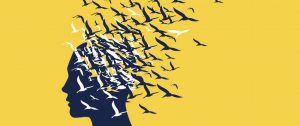
Mainstreaming Mindfulness: Encouraging Trends
In our work and travels with hundreds of leading medical centers, universities, organizations, and governmental groups around the globe over the past 40+ years we are heartened to see an ever widening diffusion of mindfulness teachings. Here are some of the most inspiring examples we have seen:
- Contemplative Science: The rapidly emerging field of contemplative science brings together the best of technology, neuroscience, and inner technology inspired by the wealth of the world’s wisdom traditions giving rise to innovative programs and research in hundreds of universities and respected institutes around the globe. Mind and Life Institute’s International Symposiums on Contemplative Studies have brought together thousands of people from around the world to share their research on mindfulness and many other contemplative practices. (https://www.imconsortium.org)
- Leadership and Contemplative Science: While a myriad of leadership developments are being offered in our world today, few have seriously addressed the development of moral, ethical, and contemplative capacities of leaders. One of the most relevant and inspiring initiatives we have seen in this regard is the Mind and Life Institute’s Academy for Contemplative and Ethical Leadership (ACEL) that we were fortunate to help birth. (https://www.mindandlife.org/legacy-programs/acel/ )The ACEL charter states,
- Mindful Law: Nearly a decade ago Rhonda McGee took a bold step to introduce the first course on Mindfulness in Law class at Berkeley Law School. Since then, 40+ law schools have followed her lead with programs on Mindfulness and Contemplative Lawyering as essential skills for professionals in the judicial system.
- Mindfulness in Medicine: Mindfulness is an essential element of the core curriculum within the 70+ medical schools that participate in the Consortium of Academic Health Centers for Integrative Medicine.https://www.imconsortium.org
- Mindfulness in Government: In recent years, British Parliament’s Mindfulness Roundtable which involved over 120 MPs and Lords from different parties of the government who have trained in mindfulness, gave rise to the development of the Mindfulness Initiative and the Mindful Nation UK Report which encourages the integration of mindfulness in four domains of British society: health care, education, criminal justice, and the workplace. (The Mindfulness Initiative: Mindful Nation UK Report. 2015)
- Wisdom 2.0: Since its inception in 2010, the Wisdom 2.0 conferences have brought together thousands of organizational leaders and consultants from around the planet interested in the interphase of mindfulness, meditation, yoga, leadership, innovation, organizational health and performance, social justice, quality of life, and bottom-line business results. With leaders and presenters from Google, Ford, Facebook, Twitter, LinkedIn, PayPal, Zappos, AETNA, Blackrock, Burning Man, Slack, British Parliament, U.S. Congress, and many other leading organizations to explore the many wise and helpful ways that mindfulness and related practices is delivering measurable value in our lives and world of work. (http://wisdom2conference.com/About)
- Mindful Social and Emotional Learning (SEL): With an ever increasing wealth of affirming data, robust programs are integrating mindfulness with social and emotional learning into a wide array of primary and early childhood development learning programs around the globe.
For a monthly update of compelling research on mindfulness and mindfulness based practices visit: http://GoAMRA.org
These are just a sampling of the significant and inspiring trends that we are seeing in the diffusion of mindfulness into the mainstream mindstream of our world.
References
American Mindfulness Research Association, http://GoAMRA.org
Bodhi, B. 2016. The Transformations of Mindfulness. Published in Handbook of Mindfulness: Culture, Context, and Social Engagement (Mindfulness in Behavioral Health). Edited by Ronald E. Purser, David Forbes and Adam Burke. Springer International Publishing, Switzerland, 2016 https://books.google.com/books?id=nBFVDQAAQBAJ&pg=PA3&lpg=PA3&dq=The+Transformations+of+Mindfulness.+Published+in+Handbook+of+Mindfulness:+Culture,+Context,+and+Social+Engagement+(Mindfulness+in+Behavioral+Health).+Edited+by+Ronald+E.+Purser,+David+Forbes+and+Adam+Burke.+Springer+International+Publishing,+Switzerland,+2016&source=bl&ots=Yh334UtV40&sig=HA4UeflyHZbsU9OCjYGTMouD1LI&hl=en&sa=X&ved=0ahUKEwiZ1vqN3e_ZAhUB24MKHW_dB98Q6AEILzAC#v=onepage&q=The%20Transformations%20of%20Mindfulness.%20Published%20in%20Handbook%20of%20Mindfulness%3A%20Culture%2C%20Context%2C%20and%20Social%20Engagement%20(Mindfulness%20in%20Behavioral%20Health).%20Edited%20by%20Ronald%20E.%20Purser%2C%20David%20Forbes%20and%20Adam%20Burke.%20Springer%20International%20Publishing%2C%20Switzerland%2C%202016&f=false
Bhikkhu, T. 2012. Right Mindfulness.
http://www.accesstoinsight.org/lib/authors/thanissaro/rightmindfulness.pdf
Braum, A. 2016. Kindfulness. Wisdom Publications.
Braun, E., Spring 2014. “Meditation En Masse: How Colonialism Sparked the Global Vipassana Movement” Tricycle. http://www.tricycle.com/feature/meditation-en-masse
Clarke T. C., et al. 2015. “Trends in the Use of Complementary Health Approaches Among Adults: United States, 2002–2012,” National Health Statistics, No. 79, Hyattsville, MD, National Center for Health Statistics, 2015; “Uses of Complementary Health Approaches in the U.S.,” National Center for Complementary and Integrative Health.
Consortium of Academic Health Centers for Integrative Medicine. https://www.imconsortium.org
Gyatso, T. the Dalai Lama. 2001. Dzogchen: The Heart Essence of the Great Perfection. Snow Lion Publications.
https://books.google.com/books?id=4HqLxJRN6MUC&pg=PA254&lpg=PA254&dq=%22dalai+lama%22+Dzogchen+London&source=bl&ots=uKMkzDoubE&sig=j0UcaRAuBVMBTXSju5kDod–hzo&hl=en&sa=X&ved=0ahUKEwizhNa_w5HWAhVBwWMKHQBKA1MQ6AEITDAG#v=onepage&q=%22dalai%20lama%22%20Dzogchen%20London&f=false
Kotler, S. and Wheal, J,. 2016. Stealing Fire: How Silicon Valley, the Navy SEALs, and Maverick Scientists Are Revolutionizing the Way We Live and Work. HarperCollins.
Levey, J. and Levey, M. 2015. Living in Balance: A Mindful Guide for Thriving in a Complex World. Divine Arts. https://divineartsmedia.com/products/living-in-balance-a-mindful-guide-for-thriving-in-a-complex-world
Levey, J. and Levey, M. 2008. Mind Treasure. Intuition at Work. Sterling Stone Publishers.
Mind and Life Institute ACEL (Academy for Contemplative and Ethical Leadership). 2015. https://www.mindandlife.org/legacy-programs/acel/
Mind and Life Institute—Contemplative Science Symposiums. https://www.mindandlife.org/international-symposium-for-contemplative-research/
The Mindfulness Initiative: Mindful Nation UK Report. 2015. http://www.themindfulnessinitiative.org.uk/publications/mindful-nation-uk-report and http://www.themindfulnessinitiative.org.uk
Mingyur, Y. Rinpoche, and Tworkov, H. 2014. Turning Confusion into Clarity: A Guide to the Foundation Practices of Tibetan Buddhism (Boston: Snow Lion, 2014).
National Business Group on Health and Fidelity, July 14, 2016. Corporate Mindfulness Programs Grow in Popularity.
Pinsker, J. March 10, 2015. Corporations’ Newest Productivity Hack: Meditation. Atlantic.
Purser, R., Milillo, J. 12 May 2014. Mindfulness Revisited: A Buddhist Based Conceptualization. Journal of Management Inquiry. https://www.academia.edu/8102895/Mindfulness_Revisited_A_Buddhist-Based_Conceptualization
Purser, R., Ng, E., & Walsh, Z. (2018). The promise and perils of corporate mindfulness. In Chris Mabey and David Knights (Eds.), Leadership Matters: Finding Voice, Connection and Meaning in the 21st Century (pp. 47-63). New York, NY: Routledge.
Thubten, A. 2012. The Magic of Awareness. https://books.google.com/books?id=tJofqSlqmsYC&printsec=frontcover&dq=Anam+Thubten+Thubten+magic+of+awareness&hl=en&sa=X&ved=0ahUKEwjpl5bixJHWAhVD1WMKHb7EAYwQ6AEIKDAA#v=onepage&q=Anam%20Thubten%20Thubten%20magic%20of%20awareness&f=false
Wieczner, J. March 12, 2016. Meditation Has Become a Billion-Dollar Business. Fortune.
Wisdom 2.0, http://wisdom2conference.com/About
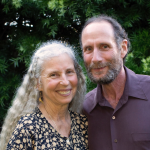
About Joel and Michelle Levey
Dr. Joel and Michelle Levey, founders of Wisdom at Work, are regarded as leaders and early pioneers in the global “mindfulness revolution,” the “contemplative science,” and the “collective wisdom” movements. Their inspired wisdom at work demonstrates the profound sensibility of integrating contemplative science, interpersonal neurobiology, and contemporary mind-fitness training for developing the extraordinary capacities of leaders, teams, and organizations in these complex modern times. Learn more here.
Change the Worldview, Change the World
Change the Worldview, Change the World
Forty years after Thomas Berry’s “The New Story,” new generations are seizing on the power of narrative.
I was sitting in a classroom in Assisi, Italy, with one of the leading environmental thinkers of our time, and he was talking about the power of story. “It seems that we basically communicate meaning by narrative,” he said. “At least that’s my approach to things: that narrative is our basic mode of understanding.”
In that summer of 1991, Thomas Berry (1914—2009) was a 77-year-old sage; a Catholic priest—though never quite comfortably—a cultural historian, and a scholar of world religions, retired from teaching but at the height of his intellectual and prophetic powers. His central focus was addressing the deep roots of the ecological crisis.
As he spoke poignantly of what was being lost—the mass extinction of species and the accelerating devastation of the biosphere—Berry told us, “The difficulty that we’re into has come, to a large extent, from the limitations and inadequacies of our story. And what we need, I think, and what we really have, is a new story.”
As a 21 year old college student who didn’t know much, this was more than enough to radically expand my consciousness. I had never thought about the concept of “the power of story,” or that we ‘know’ things by way of story, or that our ecological crisis stems from our underlying worldview. I had felt it, but had never been handed these words and ideas as tools with which to think.
A couple years earlier, I was a teenager bored with high school when I had been caught and inspired by The Power of Myth, Bill Moyers’ series of interviews with comparative mythologist Joseph Campbell. While evading homework, I read Campbell’s Myths to Live By. But Berry’s work was something different.
Where Campbell anticipated that the mythology of the future would deal with the Earth as a whole, and would likely draw on the photographs of Earth from space as a mythic symbol, it seemed to me that Berry was already weaving just such a mythos. In Berry’s view, our new understanding of the universe and the Earth—the story of galactic emergence and development which had been gradually glued together by 20th-century astronomers and physicists like a cosmological collage—could provide a new sacred origin story, a cosmological homecoming for modern culture. “It’s enormously important for us to know the story of the universe,” Berry told us in Assisi, “and it’s the only way in which we’re going to know who we are.”
For Berry, it all came down to cosmology—the basic worldview of a culture: its foundational story of how the world came to be and how it got to be as it is now, and how we, as humans, fit into it. To address the deep underlying causes of the industrial-capitalist-corporate destruction of the biosphere, we had to examine our worldview.
In Berry’s view, a central cause of the West’s ecological hostility was its separation from nature—a separation that was at once spiritual, religious, psychological, emotional, intellectual, and philosophical. The root of the eco-destruction was an anthropocentric (human-centered) Western worldview that saw an existential gulf, a “radical discontinuity,” between the human and natural worlds.
Despite being a Catholic priest, Berry (like Lynn White Jr. before him) was unsparing in his environmental critique of Christianity. The historical orientation of the Christian tradition—its mandate to subdue and conquer nature, its focus on redemption from a “fallen” world, and the priority placed on a transcendent divinity—all served to alienate humanity from the cosmic-Earth process that gave us being.
In contrast to the Indigenous and Eastern cosmologies expressed in the Native American, African, and Asian traditions Berry taught to his students as founder of the History of Religions program at Fordham, the Western worldview generally saw humans as separate from the Earth and cosmos. And not only separate, but superior, with—as Berry noted ruefully—“all the rights and all the value given to the human, and no rights and no value given to the natural world.”
When this anthropocentric orientation in Western religion and thinking merged with the “new mechanical philosophy” of Descartes and Bacon in the 17th century, in which nature was viewed as a soulless machine, the stage was set for the modern worldview. Human arrogance, capitalist logic, and industrial-scale destruction was unleashed on a desacralized planet. The living community of Earth’s biosphere, which created and sustains us, was reduced to resources for use by the human, dead material to fuel endless “growth,” profit, and “progress.”
To stop this assault on the Earth, Berry told us in Assisi in 1991, requires recognizing that our cultural story is dysfunctional. To change the world, we have to change the worldview.
The New Story
Thirteen years earlier, exactly 40 years ago this year, Thomas Berry wrote and published a groundbreaking essay titled, “The New Story” (1978). After publishing books on Buddhism and The Religions of India earlier in his career, in the 1970s, Berry’s writing took a turn. Increasingly distressed by the destruction of the planet, he penned, from his home in Riverdale, New York, a series of essays—known as the Riverdale Papers—that explored the role of worldview and spirituality in relation to ecology and environmentalism.
“The New Story” began with sentences that would become an iconic expression of Berry’s insight:
“It’s all a question of story. We are in trouble just now because we do not have a good story. We are in between stories. The Old Story—the account of how the world came to be and how we fit into it—is not functioning properly, and we have not learned the New Story.” [original version, 1978]
A decade later, “The New Story” was republished in Berry’s first collection, The Dream of the Earth, along with 15 other essays, and his cosmological vision found a wider global audience. In the words of religious scholars (and former students of Berry) Mary Evelyn Tucker and John Grim, “‘The New Story’” was “the culmination of a lifetime of Berry’s reflections on the growing ecological crisis and what new paradigm would be essential to counteract the devastating power of extractive and consumer economies. This new story, he felt, could begin to break through the modern view of materialism and reductionism that had objectified nature primarily as a resource for human use.”
Berry’s vision—sometimes referred to as the “New Cosmology”—was part of a wider movement within fields emerging in the 80s and 90s such as eco-philosophy, ecological spirituality, and ecopsychology. Proponents of these ideas questioned the fragmented worldview of modern culture. Cosmologist Brian Swimme worked closely with Berry and expressed this new cosmological vision in his books, The Universe is a Green Dragon and The Hidden Heart of the Cosmos. Radical theologian Matthew Fox critiqued the modern sense of disconnection and separation inherited from the “Newtonian ‘parts’ mentality,” Cartesian dualism, and reductionism.
Authors and activists Charlene Spretnak and Joanna Macy emphasized the practical consequences of our faulty societal story. “In the absence of any comprehension of the sacred whole,” wrote Spretnak, “meaninglessness and destruction are as acceptable as anything else to many people,” while Macy noted the relation between politics and cosmology, stating that a “sense of connection with all beings is politically subversive in the extreme.” Sister Miriam Therese MacGillis gave hundreds of presentations explicating Berry’s perspective on ecology, cosmology, and the New Story.
After publication of The Dream of the Earth, Berry continued to travel widely, teaching and speaking at conferences, universities, religious communities, and gatherings across the United States, United Kingdom, Europe, Canada, the Philippines, and beyond. In 1992 he coauthored The Universe Story with Brian Swimme and, in his last years, he published three more collections of essays, including The Great Work (1999) and The Sacred Universe (2009). By the time of his death in 2009, Berry was widely admired as one of the most influential, profound, evocative, and effective environmental writers of his day. And “while many ignored his warnings over thirty years ago,” state Tucker and Grim, “now his insights about the religious character of the environmental crisis continue to be prescient.”
Unlearning and Relearning the Elemental Stories
Twenty-eight years after writing the essay, “The New Story,” when I interviewed him in 2006, Berry was still grappling with the significance of cosmology and worldview. “It’s not easy to describe what cosmology is,” he told me. “It’s neither religion nor is it science. It’s a mode of knowing.” “The only thing that will save the twenty-first century is cosmology,” he said as we had lunch in North Carolina on a December day. “The only thing that will save anything is cosmology.”
Four decades after Berry wrote “The New Story,” his insights may be more relevant than ever. In the years after I first studied with him that summer in Assisi, I continued to reflect on story, as well as the links between social justice, ecology, and cosmology. It seemed to me that worldview was a key in all of these areas and was one of the connections between them.
Throughout the 20th century, racist and sexist policies and practices were supported by narratives operating in families, schools, workplaces, and the media, as well as in political, economic and legal/judicial institutions. The civil rights movement of the 50s and 60s, and the feminist/womanist movements of the 60s and 70s can be seen, in part, as massive re-storying on a culture-wide level.
Gender, like race, is a social construction, which is to say, a story. And the stories of sexism and racism that have cast such a pall over our history and our present illustrate the power of worldview and narrative in generating and maintaining systemic oppression. Stories become structures, systems, policies, and practices that have profound consequences on the bodies and in the lives of people in targeted communities.
Can we not see systemic racism, sexism, and other oppressions as functions of the same dominant worldview that is destroying the Earth? Settler colonialism at planetary scale? When I interviewed Berry in 1996, he told me, “If a particular society’s cultural world—the dreams that have guided it to a certain point—become dysfunctional, the society must go back and dream again.”
Yet the pervasive worldviews of white supremacy and misogyny continue to undermine our efforts to build justice, community, and democracy in the United States. Every week, as another unarmed Black man is shot by police or a woman is killed by a domestic partner, we see flawed stories turn lethal in seconds. The #BlackLivesMatter, #MeToo and #TimesUp movements are challenging and transforming racist and sexist worldviews in powerful ways.
Dysfunctional dreams. Problematic stories. Distorted worldviews. Can we not recognize these at the root of not only ecological issues, but also social injustices such as white supremacy, patriarchy, and capitalism?
Perhaps no recent event illustrates the current clash between worldviews better than the Indigenous-led resistance to the Dakota Access Pipeline in Standing Rock, North Dakota. Even mainstream media has used the word ‘worldview’, to recognize that this is not simply a conflict between activists and fossil fuel corporations, but fundamentally a clash of cosmologies.

On one side stands arrayed police forces representing the capitalist, industrial, corporatist worldview that sees nature as a resource to be exploited—a distorted dream driven by maximizing profits, regardless of consequences for people, communities, the biosphere, and future generations. On the other side is an Indigenous cosmology in which water is life, Earth is Mother, and reverence, respect, and reciprocity are paramount.
On one side is a worldview and legacy of systemic racism and mistreatment of Native peoples for centuries, in which, as Martin Luther King Jr. once said, “the ultimate logic of racism is genocide.” On the other side is a worldview of cosmological egalitarianism in which nature is holy and every being is sacred.
On one side is the “old story” of Western culture: a mythos of separation, disconnection, and anthropocentrism—of hierarchy and domination, in which division, exploitation, and oppression are the norm. On the other side is the “original story” of Indigenous traditions, a cosmology of community and connection.
The Water Protectors at Standing Rock challenged much more than a pipeline. They confronted the cosmology of the modern world and its destructive, unjust economy. Like the movement for Black Lives—which also is a direct challenge to 500 years of a white, racist worldview—the visionary resistance at Standing Rock may help guide our way into future. By connecting ecology, social justice, and worldview and using the power of spirituality, dream, story, art, and action, these movements bring forth—in practice and politics and society—what is needed most: a cosmology of interconnectedness.
The New Story of our times will be a multiplicity—a kaleidoscope of stories. As the writer and critic John Berger has said, “Never again will a single story be told as if it is the only one.” Long-silenced voices will continue to come to the fore. The stories needed most are emerging from the youth of Ferguson, Baltimore, Standing Rock, and Palestine rather than from the narrators of the status quo. From this diverse chorus, larger themes are taking shape, with recognizable contours bending toward justice and ecology.
We need stories that expose the lies of systemic racism, misogyny, heterosexism, colonialism, and capitalism. We need stories that stand up to fascism and authoritarianism, and stories that expand democracy.
We also need stories that connect us to the majesty of the galaxies and the depths of the ocean, stories that remind us who we are.
We need stories that stop abuse and create justice. Perhaps most of all, in this moment of widespread poverty and injustice, climate crisis, and mass extinction, we need stories that build movements.
In 2018, we seem, in some ways, farther than ever from the dream of a new story, with a level of political polarization that seems to fracture even our sense of common reality. Yet, if the possibility remains that we might heed Thomas Berry’s advice and “reinvent the human…by means of story and shared dream experience,” then now would be the time for massive, creative action. We owe it to the children of the future and the entire Earth community. As Berry wrote in his essay 40 years ago, “no community can exist without a unifying story.”
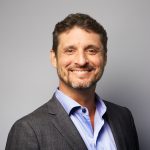
About Drew Dellinger
Drew Dellinger, Ph.D., is an internationally known speaker, writer, poet, and teacher whose keynotes and poetry performances—which address ecology, justice, cosmology, and interconnectedness—have inspired minds and hearts around the world.
Presence at the Edge of Our Practice
Presence at the Edge of Our Practice
Humanity is in a time of transition, one that we can navigate successfully only with a shift in consciousness. How can we wake up from the collective neuroses that have driven our civilization into decadence and decline? How do we recover from the addictions that hold us in their thrall? In this article, I propose the perspective of practice as a pathway to liberation from destructive and reductive habits that is accessible to all and offer a preliminary overview of human practices for the 21st century.
One of the most potent invocations ever uttered by humans has to be the famous Chinese curse (and blessing) “May you live in interesting times.” No doubt, the times we are living in are hair-raisingly interesting and getting more so by the day. So much so that we really don’t know whether we—humanity as a species—are going to survive them. The dangers facing us and our fellow sojourners on ‘Space-Being Earth’ are by now so well known that I prefer not to dwell on them, saving space instead for unpacking more edifying ideas. Starting with the Good News.
This News is not new. We have instinctively and experientially known it, literally, forever—since the dawn of homo anything. Namely, that the Cosmos is a living, sentient entity of indescribable radiance, magnificence and numinosity, in which we participate as an inextricably entangled component, along with all of the rest of life (including that which we thoughtlessly assume to be inanimate). We knew this, however, back in the days when we still lived immersed in the oceanic womb of the Great Mother. That was before the evolutionary process ripped our consciousness free of its matrix (our expulsion from the ‘Garden of Eden’) and placed us in a relationship to the rest of life which has become pathological: in our newly self-conscious state, we succumbed to the urge to subjugate and control nature, in constant terror of being sucked back into the maw of unconsciousness and ‘barbarism.’[1]
For the past 5000 years or so, we- particularly in the Western world and all those places under the thrall of the Abrahamic religions[2]- have chosen to forget this knowledge of the inextricable Oneness of all things in favor of an absolute belief in the supremacy of man over nature, man over woman, mind over matter, reason over emotion. These days, the human rational intellect still assumes it reigns supreme, repressing and denying instinct and unconsciously projecting the repressed elements of the human psyche (both individual and collective) onto ‘the other.’ Herein lies our supreme peril. Few voices have articulated it more clearly or prophetically than Carl Gustav Jung, back in the first half of the 20th century. Jung recognized and warned of the danger—one that our civilization is still quite oblivious to—presented by the growing dissociation of the conscious ego from what he called the primordial or instinctual soul. He saw that the more we emphasized reason and the supremacy of the rational mind, the greater the danger that instinct—whose power we have failed to acknowledge or understand—would drive, possess, delude and overwhelm us, and the more we would fall victim to ideologies and utopian goals which could ultimately lead us to destroy ourselves.[3]
This danger springs from the failure to recognize and acknowledge that the conscious, rational mind of the human being, in both its individual and collective/cultural manifestations, sits like a lily pad atop a caldera of unconscious psychic material that is both unfathomably immense and inconceivably powerful. Our dawning understanding of the universe as a holographic phenomenon indicates that matter, energy, space, and time are not primary, as we have tended to assume. Rather, these are all different expressions of information.[4] One ramification of this is that the visible world is not the only dimension that is fully interconnected. The human conscious mind is a very, very thin, terrifyingly fragile layer of self-reflexive awareness that floats atop the species memories not only of homo everything, but of every single form of life (animal, vegetable, and mineral) that has evolved over the lifetime of planet Earth. We are talking here about the psychic imprints of patterns of behaviour that have endured for spans of time ranging from millennia to hundreds of millions of years. Habits, with a capital H.
We can perhaps most readily relate to this phenomenon through personal experience with our very own ‘triune’ brains. The reptilian brain has been around for some 500 million years, the mammalian brain for 200 million; the neocortical brain is the baby of the family, at around 1 million years. Not surprisingly, given hierarchy of age, the primordial reflexes governed by the older brain systems have far more influence on the neocortical brain than it has on them. How many times a day, in our stress-filled daily lives, are we drenched in adrenaline and cortisol as our instinctive fight-flight mechanism is triggered by a minor irritation or momentary overwhelm, even when there is no real danger in sight, and hasn’t been for years? Have you ever been swimming in the sea, glimpsed a shadow beneath you, and been instantly engulfed in primal terror of being devoured by a leviathan from the deep (and it was only a patch of seaweed…)? You were experiencing the millions-of-years-old programming of predator and prey. To quote Anne Baring:
Because these archaic instincts function at a deeply unconscious level we, who see ourselves as the summit of creation, may nevertheless be influenced, even controlled by habits formed during pre-human or early human phases of evolution. Fear of becoming prey can swiftly transform us into predators.[5]
While the neocortex has given us the capacity to reflect when we are confronted with a perceived threat, to allow ourselves time to decide how to respond, it is very rare that we actually do so. The reptilian brain springs into action so much faster than the neocortex! For all our amazing achievements as a species, we remain woefully clueless—as individuals and in most of the world’s surviving cultures—about our own psychology. As we go about our daily lives, we are for the most part blissfully unaware of the projections, assumptions, judgements, and inflations that we continually overlay on everything our senses encounter that we experience as ‘not me.’ The ramifications of this in the collective arena offer special cause for concern. As a result of our rather bloody history since the dawn of aforementioned self-reflective awareness (that history itself a reflection of this mechanism), the drive to conquer and control others before they conquer and control us has become embedded in instinctive patterns of response (a.k.a., habits) that, if we only stop to look, we can see everywhere around us in our modern society—especially and, most alarmingly, in our politics, economy, religion, and armed forces. What Jung prophesied has indeed come to pass, and we are not even aware of it. Mass insanity didn’t just break out during the World Wars, in Stalin’s Russia, in Rwanda, in Bosnia… It is happening all around us here and now. What else can explain our indifference to the starvation of children and our incapacity to care enough about the despoliation of our beautiful planetary home to come to our collective senses and stop it? Our species has effectively been collectively possessed by the will to power of the more shadowy aspects of what Jung named the collective unconscious.
So here we are. On the one hand, we have the intellectual understanding, backed up by compelling scientific evidence, of the sublime oneness of creation, and the potential that this opens up for an enlightened human culture and civilization. On the other, we are literally surrounded by the bleak evidence of the power of the instinctual trauma that has our entire civilization so thoroughly in its grip that we are careening toward destruction without any capacity to engage our conscious will and change course. Many are the voices that proclaim impending salvation—sometimes for the chosen few (the ‘rapture’) and sometimes for all humanity (our comfortable conviction that technology will save us at the eleventh hour). And yet here we still are, contending with ever more extreme polarization, violent conflict, and existential threat, all amped up by the machinations of power-hungry politicians and profit-hungry corporations, and the fear-mongering of the mainstream media channels that so firmly anchor the collective attention on the worst in human nature. To deaden the pain of such horror, the current mainstream practice is to seek distraction in addiction, be it to mind and mood altering substances, to work, to entertainment, to the acquisition and consumption of material goods…our addictions are legion!
Please note my choice, in the previous sentence, of the word practice. If salvation there be for the human race, I believe it lies in the humble notion of practice. The Oxford English dictionary offers three definitions of the term:
(1) the actual application or use of an idea, belief, or method, as opposed to theories relating to it (synonyms: application, use)
(2) the customary, habitual, or expected procedure or way of doing of something (synonym: custom)
(3) repeated exercise in or performance of an activity or skill so as to acquire or maintain proficiency in it (synonym: training)
In the sentence at hand, the operative definition is (2). Revisiting my assessment of the peril and the promise that beset us in these days, the unconscious trance state currently driving us over the cliff is maintained through the cultural, social, and economic customs of Western civilization as they spread across the globe.
The bridge to the “More Beautiful World our hearts know is possible”[6] lies in actually applying the best of human knowledge- all that we know to be true about depth psychology, healthy living, wise governance, nurturing and empowering education, regenerative farming, and so on (definition 1); through persistent, repeated, intentional individual and collective exercise in the requisite methods until we acquire proficiency in them (definition 3). This is how old habits (definition 2) are broken and new ones instilled. This is how we move from our current preconscious state toward becoming a species composed of awake, aware, responsive and responsible, self-actualized, and unique individuals who also have developed a capacity to participate in the collective consciousness that, too, is part of our potential as humans.[7]
I see practice, then, as a royal road to manifesting a balanced and healthy new paradigm in our culture- a bridge to liberation from so much of what ails us. When we first come to practice, or are invited to experience the practices of others, these often feel unfamiliar, uncomfortable and unnatural. That’s not surprising: their whole purpose is to break old habits and instill new ones that help us to experience and embody a very different evolutionary trajectory for homo sapiens—beyond mere dreams of peaceful coexistence—as healthy and generative participants in the dance of life on Earth.
This focus on practice is one of the hallmarks of the emergent exemplars of what I call Aquarian Patterns (patterns underlying the embryonic new civilization). It is an immensely rich and complex domain and, in this article, I must content myself with giving a preliminary overview. As I sense into these patterns in my own life and experience (something I have been doing for over 20 years now), the framework that has given me the broadest and most explicit practical overview of the potential offered by intentional practice is the ‘Fourfold Practice’ that describes the DNA of the Art of Hosting Conversations that Matter.[8] I feel that this is a particularly fruitful domain to offer as an example of practice because it concerns the art of being together in a generative and co-creative way, one which can hold us well in our interactions as we apply all the other practices needed to build the ark of a new civilization where all life can thrive.
The Stance of the Practitioner
My rather intense engagement with the practices of the Art of Hosting and its community of practitioners over the past 12 years has brought me to recognize the power and potential of the ‘stance of the practitioner:’ practice is not a boring chore, but a sacred troth—a commitment to ourselves, to those we serve by hosting them, to each other as a community of practice, to the world at large, and to the practices themselves. Stepping from the autopilot of everyday consciousness into practice is like stepping into the dojo of the martial arts. We leave our shoes (and socks!) at the door and as we step onto the mat, we bow to the practice, to the teachers, and to our fellow practitioners. Whatever the field of practice, this is Sacred Space and we are in Sacred Work together.
The Fourfold Practice[9] is so named for its four ‘domains’ of practice: the inner practices of ‘hosting the self into presence’; the relational practices of ‘participating and being hosted’; the leadership practices of ‘hosting others in conversations that invite presence’; and the collective practices of ‘co-creating in community.’ All four of these domains of practice are based on the core practice of ‘holding space’—an active, energetic process of deep presence, listening, and mindfulness that is at the heart of intentional manifestation. All four also are firmly rooted in the ground of continual learning, both individual and collective. There is no end to what becomes possible if we stay open and humble enough to keep learning!
Unpacking each of these domains, we can see that there is such a great variety of practices that no one need go hungry. Living a healthy and balanced life means adopting a variety of practices in each of these domains. The idea is not to bolt these practices onto our daily lives as extra things to do (the last thing we need is more busyness!), but rather to shift our lives gradually until we live them through our practices.
Hosting the Self into Presence
Living well in a participatory universe is the art of being. Being requires presence—that quality of authenticity, vulnerability, confidence, and courage, which comes from deep personal work that cannot be done in isolation. Presence is a holistic, emergent quality incorporating physical, mental, emotional, and spiritual dimensions. Presence is what allows us to stand in the midst of intense emotion, to tolerate chaos without rushing to fix anything, to be comfortable with the silence and stillness of non-doing, to work in service of a purpose bigger than personal ego.
Hosting self is the practice domain of holding space for the emergence of presence. On a physical level, it involves listening to your body, nourishing it with pure, clean, natural food and water, getting adequate rest and exercise, and managing stress. On a mental level, it cultivates an open mind free of habitual patterns of thinking and unconscious beliefs and assumptions. On an emotional level, it learns to recognize what triggers habitual emotional reactions, heal the underlying trauma and develop new ways of embodying and expressing emotion in general. It also helps us to own our expectations and projections and to cope with anxiety and uncertainty. It nurtures self-compassion and a willingness to take risks, and it enables us to be comfortable with so-called mistakes and failures and learn from them. On a spiritual level, hosting oneself connects us with the unseen world of energy and spirit, reduces attachment to ego, and frees us to work through the heart with compassion and without the need to be in control. It supports us in embracing solitude and silence and a connection to the natural world. Presence cannot be manufactured or forced, or even developed. It is the natural emergent quality available when we gently recognize and remove barriers in a self-reinforcing cycle of holding space for presence which allows for deeper holding of space and deeper presence.
There is no set of specific approved or recommended practices for hosting oneself. Every practitioner must find his/her own practices for letting go of control and holding space for presence to emerge. These practices could include yoga, dance, martial arts, meditation, contemplative writing, prayer, psychotherapy, time in nature, solitude, tantric sex, art, music… the list is endless. The importance is finding a set of practices that increase your personal capacity for presence and then to commit to regular practice. We have found it most helpful to ground any and all practice in an inner state of gratitude, awe, curiosity, and love.
Participating and Being Hosted
With the presence which arises from hosting the self, we are ready to participate. On one level, this means engaging in activities with others and allowing yourself to be led. As your practice of participating deepens, it can evolve into a participation with all of life. At that level, participation becomes an intense immersion in what is, without expectations and without a desire to attain any particular outcome. It is about showing up with your full self and your own interests and predilections whilst sensing what wants to happen and discerning how to align yourself and your interests in service of a larger purpose. Participating fully requires trust and letting go of control. It invites a depth of communion in which silence is a welcome participant and in which connection and communication transcend spoken words and include nonverbal and energetic components. Participation is an invitation into the unknown, an opening to being changed, a willingness to step into the field from which emergence is possible.
In human society, participation frequently manifests through conversation[10], and conversation is an art. It is not just talk. It demands the presence to listen carefully to one another, to nature, and to the unseen. It demands silence as well as words. It demands that we offer what we can in service of the whole, speaking with deep intention while listening with rapt attention. Life-affirming participation flows from a mood of curiosity, recognising that curiosity and judgment cannot live together in the same space. If we are judging what we are hearing we cannot be curious about the outcome, and it will be difficult for the conversation to move beyond defending preconceived positions. Skillful participation in conversation requires an open mind, open heart, and open will. It calls for mindfulness and the ability to slow a conversation down to allow deeper listening and clarity to arise.
Practices within the domain of participation include active listening; dialogue; asking powerful questions; owning one’s own projections, expectations and assumptions; clarifying intentions; cultivating a mood of curiosity and openness and listening to nature. It is clear at a glance that many of these practices are a complex world in themselves- there is no danger of getting bored!
Hosting Others into Presence
As we transition from the prevailing paradigm of the ‘leader as hero’ to the emerging ‘peer-to-peer’ paradigm, the conversational ‘leader as host’[11] creates and holds a container in which people can do their best work together. This holding of space involves sensing the conditions that will allow a group to settle into collective presence, holding that space through chaos so that new order and clarity can emerge. Such conversations do not just happen, they are the product of clear intentions, a powerful calling question, a compelling invitation, good design, skillful framing of the context and the holding of space in which the work can be done, and, most of all, the presence to hold space for emergence. All of these are practices and skills of hosting conversations.
Initially, hosting is likely to consist of mastering a set of core methodologies.[12] In time, the practice calls for increasing depth of presence to be able to hold space for deeper or more challenging conversation. As our capacity deepens, the practice also includes more subtle aspects including preparation of the physical space; invitation and welcoming; and working with the energy of the group. While much of the attention of hosting is focused on the external work—the actions—an equally important aspect of hosting practice is to attend to one’s inner state and learning. Hosting inevitably challenges us at our growing edge, whether that lies in relinquishing control, feeling competent and adequate as a member of a hosting team (hosts are admonished never to work alone!), finding the right language to invite deeper participation, or accessing the courage to touch in on the collective wounds often festering under the surface. A practitioner of hosting is engaged in both the internal and external practices. While very few practices are best done alone (even meditation benefits from a collective field), it is particularly important to work in a team when hosting.
Co-creating in Community
It is one thing to learn new skills and practices in an environment specifically designed to be conducive to learning. But what then? In order to be able apply our learning in our daily lives, to sustain our learning and keep our practice alive and growing, we need to stay connected to other practitioners. The traditional way of addressing such challenges is to create an organisation or association and to follow the wisdom of the experts. But in a context of emergent social transformation, this approach doesn’t work. The shared knowledge springs from collaboration and conversation, and is not in the possession of an expert. There are no rules, no formulae, no formal requirements for doing this work. Life is inviting us to innovate, to collaborate, to discover new models and processes that can serve humanity in our collective journey into the unknown future. Yet there also is a need to recognize and protect the essential DNA of any novel body of work that develops a community of practitioners—there is a constant danger that the practice will be sucked into the miasma of old habits and warped out of shape by prevailing thought forms. Each one of us can benefit from learning from practitioners with more experience and deeper realization. What guidelines and agreements can help a community of practitioners to participate together?
The Art of Hosting community can be illustrative of how such communities can emerge. Over a span of 20 years, it has grown from a few friends sharing ideas together, to a globe-spanning self-organising network with over ten thousand members and a steadily evolving core body of practice accessible to all. This has unfolded, quite deliberately, without any licensing or copyrighting, without any organisational structure, staff or headquarters, without any specific financial expectations or agreements, and without any explicit governance. Over time, a group of more experienced practitioners has emerged who are recognized as stewarding the DNA of these practices, and practitioners come together periodically at open gatherings (one of our guidelines is “whoever shows up are the right people”[13]) to sense into the needs of the community and make any necessary collective decisions. Newer practitioners are encouraged to apprentice to the more experienced and one of the few ‘rules’ within the community of practice is that there needs to be a ‘steward’ involved in any Art of Hosting training. This has provided a framework in which practitioners can learn and develop their capacity while also protecting the deeper patterns and essence of our shared practice. What has also emerged is an online platform for communicating and for collecting and disseminating learning, models, materials, and other artifacts of our learning.
This community of practice pattern has emerged regionally throughout the world in response to local needs and circumstances, and while it doesn’t look the same everywhere, there are many shared elements. The beauty of this fourth domain of practice is that we are all learning together to hold the space for learning together, and for the ongoing emergence of our practices in response to the needs of our changing world. Like so much within the Art of Hosting, this is fractal. The success of our community lies in our systematic engagement with our practices in all four domains. As we learn together, we also are confronted with our blind spots and those parts of our practice that are less skillful or conscious. This provides an opportunity for us individually and collectively to increase our capacity through hosting ourselves. Thus, the Fourfold Practice is an iterative cycle leading to deeper practice and ever-increasing capacity.
In conclusion, my sense is that the practices which will best help us navigate the growing complexity of these transitional times are grounded in the heart. It is the instinctive intelligence of the heart that most thoroughly connects us to ourselves, each other, and all that is. Let us share the core practice of inhabiting the gentle energy of heart-centred awareness as we step into the dojo of our lives. Let us do so in the understanding that this is not the culmination of our journey; rather, it is simply the work that is needed to reach the starting point for the next great adventure: developing our capacity to consciously and intentionally participate in the cosmic processes of co-creative manifestation. This calls for clearing away the debris and drama of our collective ‘story so far,’ learning through heartfelt practice to process and, hence, traverse our existential fears, thereby restoring for ourselves a soul space in which to choose other ways of being, other paths into a future of utterly astonishing potential.
Images | The Book of Life: The Spiritual and Physical Constitution of Man, 1898, Dr Alesha Sivartha
Sivartha’s enigmatic 1898 work expounds his unique blend of blend of science, sociology, mysticism and religion…The ideas these curious images express are difficult to sum up succinctly but broadly touch on the main tenants of theosophy. In the words of Sivartha himself:
“The human race has been marching upward from the first ages of history. Under what law has that mighty procession of the ages taken place? Science and history both answer that man has advanced, step by step, from the ignorant and selfish rule of his lower brain organs uptoward the beneficent dominion of his higher faculties. The laws which have controlled that vast upward movement are still in force. They are fixed in the very constitution of man. And they are of supreme importance at the present time, for they determine what new institutions and what social changes are now required to meet that higher growth of man.”
As for the author himself, not a lot is known for certain, other than Sivartha appears to be the pen-name for a Kansas doctor named Arthur E. Merton (1834?-1915?), who is listed as the author of an earlier 1876 version of The Book of Life. (Source: The Public Domain Review)
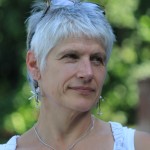
About Helen Titchen Beeth
Helen Titchen Beeth lives in the countryside in Flanders (Belgium). She is a lover of wild nature and mother of twins.
References
[1] This understanding/interpretation is based on the ‘mainstream’ assumptions about the history of homo sapiens. Less widely-known evidence suggests that an earlier global high civilization was wiped out by a cataclysm some 11, 500 years ago, which imprinted massive trauma into our species memory. Barbara Hand Clow, Awakening the Planetary Mind (2011).
[2] With the strong exception of the mystical strands of those religions!
[3] Adapted from The Dream of the Cosmos, by Anne Baring. Archive Publishing, 2013.
[4] The Cosmic Hologram, Jude Currivan. Inner Traditions, 2017.
[5] The Dream of the Cosmos, Anne Baring.
[6] Grateful to Charles Eisenstein for this powerfully evocative phrase.
[7] See also the series of Kosmos articles (2012-13) on Collective Presencing co-authored with Ria Baeck.
[8] See my article in the 2016 spring/summer edition of Kosmos Journal.
[9] This section on the Fourfold Practice is adapted from the Companion Guide to the Art of Hosting compiled by Steve Ryman and myself in early 2016. My gratitude to Steve, who was the main author of that section. [Where is the Companion Guide published (book, article, website…)?]It isn’t openly available to the public.
[10] In essence, our entire cultural manifestation is a conversation, one which has become ever more global, intense, and polarized through our use of information technologies—hence, the importance and potential of developing our conversational capacity!
[11] See also http://www.margaretwheatley.com/articles/Leadership-in-Age-of-Complexity.pdf
[12] Such methodologies include Circle, Open Space Technology, The World Café, Appreciative Inquiry, etc.
[13] Borrowed from the practice of Open Space Technology.
Dynamic Governance
Dynamic Governance
Dynamic Governance offers new processes for structuring successful 21st-century organizations and networks. Pamela Boyce Simms summarizes a brief history of traditional top-down, hierarchical organizations (implicit governance) and critiques their inability to sustain success in our current decentralized society. She then details how the egalitarian and interdependent cornerstones of dynamic governance redistribute authority to all participants in an organization, allowing for holistically informed decision-making that is flexible and comprehensive.
The 21st century is witnessing hundreds of millions of people caught up in cascading systemic transformation. Global society has crossed a threshold. We’ve entered the time of the Great Transition—a time when we hospice outworn ways of living that no longer serve us and the Earth, and give birth to an emergent, more compassionate, and resilient future.
Successful navigation of the uncharted climate change and sociopolitical territory before us requires that we embrace uncertainty, unlearn much of what we think we already know about our world, and embody the understanding of non-dual reality.
We all make meaning and find purpose using whatever tools and information are available. Global society is on an ecologically self-sabotaging course because the meaning we’ve made of the world is distorted by the illusion of disconnection. Our beliefs, behaviors, and the choices we’ve made proceed from the lenses of separation through which we’ve been trained to see for generations.
Western society, in particular, is built on the flawed cognitive foundation of duality. We’re educated to focus on analysis of atomized parts to the exclusion of their interdependence with all other parts of the larger system. This is the worldview in which hierarchical dominance, power-and-control dynamics, competition, hyper-individualism, compartmentalized approaches, and lack of communication prevails in organizations and isolates individuals.
The organizations that we generate inherently reflect the quality of our own consciousness in the moment. Organizations that want to be relevant vehicles for our work in social change during these kaleidoscopic times need to “unlearn” linear, disconnected, and static approaches to governance. They must commit to ongoing transformation in sync with incessant societal shifts. Therefore, we—and the organizations that serve us—are poised by existential necessity to deliberately take the next evolutionary step in consciousness. We stand at the proverbial evolve or die precipice.
Come to the edge, he said.
They said, We are afraid.
Come to the edge, he said.
He pushed them… and they flew.
─Christopher Logue
We have the capacity to leave the familiar nest of predict-and-control, top-down organizational structures—and fly. Among a new generation of governance processes grounded in evolutionary culture-building, ‘dynamic governance’ (also known as sociocracy or governance by the socios: i.e., those who associate together) creates safe space for innovative self-expression, emergence of the unexpected, and universally equivalent agency. These are the hallmarks of 21st-century organizational relevance.
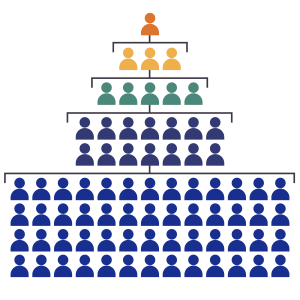 Conventional hierarchical organizational structures are not designed to deal with our current complex, multifaceted, existential challenges. The top-down structure is an inherited carry-over from a simpler, more static industrial-age environment. Organizations now are pointlessly scrambling to adapt rigid hierarchical structures to rapidly shifting circumstances and unpredictable disruptions. Out of step with the speed of incessant change in today’s world, they lurch from crisis to crisis. We are witnessing, firsthand, the crumbling of old organizing principles that no longer meet society’s needs.
Conventional hierarchical organizational structures are not designed to deal with our current complex, multifaceted, existential challenges. The top-down structure is an inherited carry-over from a simpler, more static industrial-age environment. Organizations now are pointlessly scrambling to adapt rigid hierarchical structures to rapidly shifting circumstances and unpredictable disruptions. Out of step with the speed of incessant change in today’s world, they lurch from crisis to crisis. We are witnessing, firsthand, the crumbling of old organizing principles that no longer meet society’s needs.
Organizations that strategically plan in static frameworks in these increasingly uncertain times perpetuate lumbering structures that are maladapted to emergent, dynamic, creative tensions. They avoid conflict that inevitably emerges and ignore most feedback-dissonance that contradicts “the established plan” in which they feel invested. Such organizations are then compelled to repeatedly and disruptively reorganize when it’s realized that the prevailing lines of force can change in a nanosecond.
The Rise of Implicit Governance
When hierarchically-controlled organizations “message” egalitarianism and go through the motions of collaboration without explicit feedback and accountability mechanisms in place, an implicit power structure emerges. Culturally “understood” social norms that protect centered power behind the scenes develop. An implicit system centers power in one person or a small set of persons. Although “invisible,” the implicit power brokerage is keenly felt, highly political, and resists change.
Organizations that are up to 21st-century challenges mimic complex, adaptive living systems and decentralize authority. Their interconnected constituent elements self-organize and change relationships among themselves fluidly in order to easily adapt to environmental changes. Participants don’t execute decisions made by superiors in a hierarchical chain of command. They tap into their own creativity, adapt, and make adjustments that further the organization’s purpose.
Dynamic Governance
Dynamic governance is a social technology for governing and operating organizations and networks. It distributes policymaking throughout all levels of the organization and establishes equivalence among its members within their domain of responsibility. It maximizes:
- Equivalence through egalitarian distribution of authority and the universal power to influence.
- Transparency through flow of information and collective values.
- Efficacy through continuous evolution and adaptation to changing contexts.
- Productivity by making tensions explicit and establishing processes that use them as fuel for innovation and evolutionary change.
- Commitment and buy-in by affirming and applying the collective genius that proceeds from a confluence of varied vantage points.
- Harmony through unity.
Dynamic governance incorporates the principles of Quaker process; whole systems and applied complexity theories; nature systems dynamics (biomimicry); and evolutionary culture-design. Nonhierarchical egalitarianism that mirrors the interconnectedness of nature organically guides organizations toward maximizing their potential.
Outcomes:
- Provide sustainable, accountable, and adaptable governance that is effective regardless of the financial state of an organization or network.
- Address and diffuse multiple “ism” inequities and power imbalances.
- Thrive in complex, uncertain, and unstable times.
Dynamic governance anticipates and accommodates complex, multilayered, and interconnected 21st-century challenges and ever-emerging, ever-shortening timeframes. The governance process increases capacity to effectively handle accelerated uncertainty.
Organizations that have implemented dynamic governance become adaptive organisms that foster innovation. Tensions that emerge are viewed as valued, important sensors of the human consciousness which are harnessed for creative change and evolution. Channels are established to process insights as they emerge.
Dynamic governance distributes authority among all constituents through a process and explicit organizational agreements which cultivate the whole. Authority shifts from “veterans,” personality-cults, or “resourced” leadership to egalitarian organizational processes. The circle configuration and decision-making process ensures and safeguards everyone’s agency.
Decision-making Principles
Decision-making principles revolve around:
- Consent: policy decisions are made with the consent of those who are most directly affected. Consent is defined as “no objections,” “good enough for now,” and “safe enough to try,” which creates space for change. Policies facilitate day-to-day tasks and resolve issues to achieve organizational aims.
 Circles: policy decisions are delegated to circles composed of all members of a decision-making body. In meetings, all members function as equals and elect their own officers: a convener, a facilitator, a delegate (an elected representative), and a recording secretary. Day-to-day operational decisions are made by the convener and/or facilitator within the policies established by the circle and the larger organization. Conveners, facilitators, and delegates are equal members of the circle.
Circles: policy decisions are delegated to circles composed of all members of a decision-making body. In meetings, all members function as equals and elect their own officers: a convener, a facilitator, a delegate (an elected representative), and a recording secretary. Day-to-day operational decisions are made by the convener and/or facilitator within the policies established by the circle and the larger organization. Conveners, facilitators, and delegates are equal members of the circle.
- Double Linking: the convener and a delegate participate in other issue-related circles. Circles are arranged according to scope of decision-making. The General Discernment Circle, for example, is composed of linked representatives of circles dealing with more specific aims and issues. Double links create overlapping participation in decision-making by members of various circles. This establishes communications and feedback loops.
Practices
Following are common dynamic governance practices:
- Nominations and elections are conducted exclusively by consent after discussion (not a majority-vote election). All circle members participate in assigning roles and responsibilities.
- Rounds invite each person to speak in turn and are used to maintain equivalence in a meeting. They balance the discussion giving each person the opportunity to speak and to ensure that everyone participates in decisions.
- Evaluations are conducted as each policy decision is reviewed periodically. Evaluations include feedback on member work and emergent role needs.
- Transparency is essential when all members are expected to exercise agency in their own development and that of their circle. Information must flow continually and be readily available for effective and informed decision-making.
What Is Possible?
Dynamic governance offers an opportunity to translate the unlearning of antiquated worldviews directly into governance of organizations that serve social transformation. We start by fully accepting that the old system no longer serves us in these tumultuous times.
We can resist the temptation to look at, and work on, local, national, and global problems in isolation. We can withstand the siren song of the old paradigm, calling us to reflexively try and find “the right part to fix.” We can cease trying to strategically tinker with our organizations or reshuffle their elements expecting a result beyond mediocrity. We can accept the reality that comprehensive, holistic transformation that creates space for evolution will lead to efficacy and sustain relevance.
Culture-building that accompanies an organization’s adoption of dynamic governance expects participants to enthusiastically do the introspective work that shifts their worldview toward serving the aims of the whole. By embracing dynamic governance, we willingly step into increased autonomy, personal responsibility, and opportunities to grow. We contribute to authentically collaborative workplaces and community relationships. Dynamic governance provides a pathway for those whose organizations and networks are ready to stand in the epicenter of social transformation and offers an evolutionary response to society’s multitiered, existential challenges.

About Pamela Boyce Simms
Pamela Boyce Simms is an evolutionary culture designer who coordinates Quaker, Buddhist, and African Diaspora Earthcare networks, which relocalize plant medicine-based selfcare sovereignty scaled from hyper-local to supranational at the United Nations. Pamela convenes the Community Supported Enlightenment (CSE) Network, an international community of practitioners who combine ancient contemplative practices sharpened by cutting edge neuroscience in a quantum science framework for self-transformation in service to social change.
Pamela Boyce Simms holds degrees from Georgetown University’s Edmund Walsh School of Foreign Service, the L’Université de Dakar, in Sénégal, West Africa, and is certified as a Leadership Coach and Neurolinguistics Master Practitioner. Pamela is a frequent guest speaker for the Swarthmore College Office of Sustainability, as well as the Environmental Studies and Theology Departments. She is also a Contributing Author at Kosmos Journal for Global Transformation, the Grassroots Economic Organizing (GEO) Editorial Collective, and Resilience.org, a project of The Post Carbon Institute.
For more:
- 3-minute video – Overview of the Plant Medicine Project: Woodstock Timebank & Singularity Botanicals.
- “Our Story” – Intersection of Singularity Botanicals work in Chester and the Community Supported Enlightenment (CSE) Network.
Climate Reports
Climate Reports
The power and abundance of our Earth can never be overstated; what is commonly overlooked is humanity’s exploitation and neglect of its own life source. The following are summaries of recent studies conducted on the interrelationships between climate change and four distinct areas: fashion, food, the sea, and mental health. Brief and laced with sobering data, these glimpses into our intricate, reciprocal relationship with the Earth’s changing climate are intended to evoke a sense of personal responsibility and inspire informed action, no matter how humble. Humans have a continuous effect on the planet, yet an impermanent place in its history. Each of us who walks through its lush fields and drinks from its abundant waters has a duty to protect and support the Earth during the short time we are here.
Fourth National Climate Assessment
The report, prepared with the support and approval of 13 federal agencies, and with input from hundreds of government and non-governmental experts, provides a comprehensive look at how climate change will impact the United States.
These Summary Findings represent a high-level synthesis of the material in the underlying report. The findings consolidate key messages and supporting evidence from 16 national-level topic chapters, 10 regional chapters, and 2 chapters that focus on societal response strategies (mitigation and adaptation). Unless otherwise noted, qualitative statements regarding future conditions in these Summary Findings are broadly applicable across the range of different levels of future climate change and associated impacts considered in this report.
“Climate-related risks will continue to grow without additional action. Decisions made today determine risk exposure for current and future generations and will either broaden or limit options to reduce the negative consequences of climate change.
While Americans are responding in ways that can bolster resilience and improve livelihoods, neither global efforts to mitigate the causes of climate change nor regional efforts to adapt to the impacts currently approach the scales needed to avoid substantial damages to the U.S. economy, environment, and human health and well-being over the coming decades.”
Food
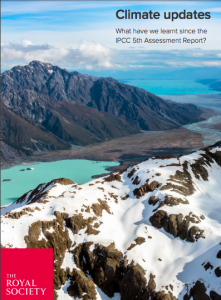
Climate change impacts the health of the Earth and the lives it sustains; as the Earth undergoes many environmental stressors, future access to food is a critical concern for many. The Royal Society’s update of the Intergovernmental Panel on Climate Change (IPCC) 5th Assessment Report provides an analysis of global studies on climate change’s impact on food production. The report indicates that although climate change has varying effects on crop yields across different geographic areas, the aggregate effect of a 2-degree Celsius increase in global temperature will ultimately decrease crop yields. This report specifically examined wheat, rice, and maize—global staples of the human diet. Since 2013, the research also has focused on crop quality. The report suggests that increased carbon dioxide (CO2) emissions and higher temperatures will potentially cause crops like wheat to decrease in nutritional value.
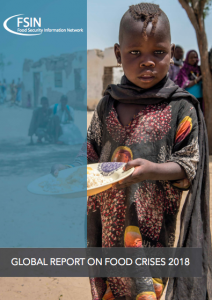 A report by the Food Security Information Network (FSIN) provides further insight into the implications that reduced global access to food and water has for human health. Food insecurity is an intersectional crisis, with political, economic, and environmental factors playing intricate roles. Food security is determined by consistent access to sufficient quantities of food—imported or locally grown—with positive nutritional quality. Food insecurity describes a lack of access to these resources, which can lead to hunger, malnutrition, and famine. It can threaten lives and livelihoods. FSIN reports that, in 2017, 124 million people in 51 countries experienced food insecurity—an increase of 11 million people since the previous year. In 23 countries, extreme climate conditions, including drought, were a primary contributing factor to food insecurity. Areas in eastern and southern African have suffered high incidences of malnutrition due to poor harvests.
A report by the Food Security Information Network (FSIN) provides further insight into the implications that reduced global access to food and water has for human health. Food insecurity is an intersectional crisis, with political, economic, and environmental factors playing intricate roles. Food security is determined by consistent access to sufficient quantities of food—imported or locally grown—with positive nutritional quality. Food insecurity describes a lack of access to these resources, which can lead to hunger, malnutrition, and famine. It can threaten lives and livelihoods. FSIN reports that, in 2017, 124 million people in 51 countries experienced food insecurity—an increase of 11 million people since the previous year. In 23 countries, extreme climate conditions, including drought, were a primary contributing factor to food insecurity. Areas in eastern and southern African have suffered high incidences of malnutrition due to poor harvests.
Conflict, which affects 74 million people across 18 countries, is also a serious obstruction to food security. Countries that have experienced greater food insecurity due to intensified conflict include Myanmar, Nigeria, the Democratic Republic of Congo, South Sudan, and Yemen. In the midst of continued conflict and climate change, the global reality of food security is tenuous and requires international policy implementation and humanitarian efforts. 1, 2
Fashion
Accounting for 8 percent of global greenhouse gas emissions, the fashion industry serves as a key area of research to assess potential measures to ameliorate climate change and rising temperatures. Measuring Fashion, a 2018 study from Quantis, sheds light on the effects that the global apparel and footwear industries have on climate. Due to increased global consumption and greater use of synthetic fabrics, the fashion industry’s greenhouse emissions are projected to spike 49 percent by 2030, reaching 4.9 metric gigatons. These emission levels are comparable to the United States’ total annual emissions today.
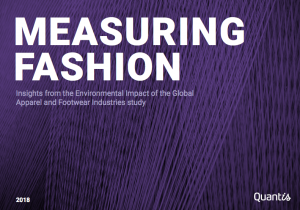
Of the seven distinct stages in a garment’s life cycle, 50 percent of emissions result from just three stages: fiber production, yarn preparation, and dyeing/finishing. These manufacturing processes, which predominantly take place in Asia, are highly dependent on hard coal and natural gases, which generate electricity and heat.
This data, derived from the World Apparel and Footwear Life Cycle Database, offers insight to companies vested in creating evidence-based plans to achieve goals related to improving their environmental impact. To effectively reduce the global environmental impact of the garment lifecycle, Quantis proposes a multifaceted approach, applied strategically to the different parts of the value chain of apparel and footwear. Indeed, suppliers and consumers have a reciprocal responsibility in implementing change. Primary production changes would include reducing the use of fossil fuels and shifting to renewable energy; improving efficiency; and using sustainable fabrics, like cotton, which require less energy-intensive processes. For consumers, the simple objective is to demand less. Sustainability is supported through reduced consumption combined with extending the use phase of a garment (through recycling, donating, and purchasing second-hand clothing).3
The Sea
From producing half of the oxygen on Earth to supporting an abundance of species—91 percent of which have yet to be discovered—the sea is foundational to all life on the planet. Currently, its ability to support life and regulate climate greatly suffers. Foresight Future of the Sea, a UK report conducted by the Government Chief Scientific Advisor, considers the health of the ocean through a lens of economic and environmental implications for the UK and its territories. Yet, the research presented in the report describes a global reality and indicates solutions that require international cooperation and action. Marine ecosystems, as well as humans, face potentially irreversible damage if the many anthropogenic impacts on marine health are not adequately addressed.
The implications of increased anthropogenic CO2 emissions and rising sea temperatures are grave for marine biodiversity. The ocean is a storehouse of CO2—30 percent of which is emitted by human activity. As oceans absorb greater amounts of CO2, the pH of waters drop, causing higher levels of acidity. The increased acidity most notably threatens reef-forming corals and shellfish who struggle to form shells in highly acidic water. According to the report, “Global sea surface temperatures have risen by 0.7°C since pre-industrial times. A further increase of 1.2°C to 3.2°C, depending on emissions, is projected by 2100.” Rising temperatures are highly correlated with species migration and a decline in cold-water species. This could result in local extinctions and the introduction of invasive, warm-water species. Warming temperatures also lead to coral bleaching, which is caused by a disruption of the symbiotic relationship between coral and algae. Algae become physiologically stressed when temperatures rise; they leave their coral, making it susceptible to disease and eventually death. Coral decline increases by up to 2 percent each year, threatening the lives it supports—more than 25 percent of all marine species.
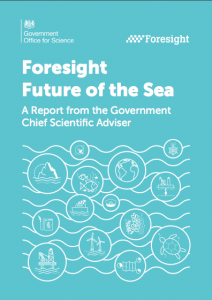
As the ocean warms, sea-levels rise. Between 1901 and 2010, sea-levels rose approximately 20 centimeters. Depending on emission levels, the sea is projected to rise between 0.25 and 1 meter by the year 2100 due to melting polar ice-caps and thermal expansion. Sea-level rise could result in greater coastal flooding during extreme weather, potentially disrupting infrastructure and threatening human lives.
The future of marine health requires greater attention to human activity in the sea and on land. Continuously, human pollution plagues global waters. Chemical pollutants as well as “pharmaceuticals in sewage and agricultural runoff, radioactive waste, noise and light pollution” are all understood to harm marine life. The largest culprit is plastic. Humans produce 300 million tons of plastic globally each year, accounting for 70 percent of pollutants in the ocean. Plastic does not decompose; it simply breaks down into smaller pieces. Between 2015 and 2035, the amount of plastic in the ocean is projected to triple. To avoid this outcome, humans need to prevent plastic from ever entering the ocean and should encourage the introduction and use of more biodegradable products.
The greatest obstacle to protecting the health of the ocean and marine creatures continues to be human consciousness. An attitude of “out of sight, out of mind” leaves the marine environment—one of the greatest supports to human health—neglected and gravely exploited. In addition to research-based policy development and implementation, public awareness and concern are critical to enabling change that will decrease the negative human impact on the marine environment.4
Mental Health and Suicide
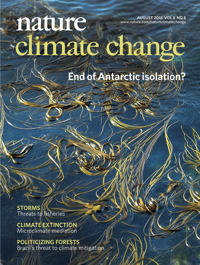
The impact of climate on human physical health has persisted throughout history—from the spread of disease, to incidents of heatstroke, to malnutrition and famine caused by lack of food. Climate’s impact on mental health is of equal importance, as mental illness plagues modern society. Indeed, as we transition into shorter days and longer nights, many people anticipate oncoming seasonal affective disorder. Departing from the study of cyclical seasonal patterns, a study published this year by Marshall Burke et al. in Nature Climate Change examines the impact that rising temperatures have on one of the top causes of death in the U.S.—suicide. Analyzing decades of longitudinal data of temperature change and rates of suicide across the US and Mexico—two countries that account for 7 percent, or nearly 60,000 of global suicides—Burke et al. found that a 1-degree Celsius increase in temperature corresponds to an average of a 1.4 percent rise in suicide rates. This relationship holds true in both warm and cold climates and seasons across these regions; for example, as temperatures rise during winters in Boston and summers in Oaxaca, suicide rates increase.
Controlling for age, gender, and income, as well as ownership of air conditioners and guns—two-thirds of gun deaths are the result of suicide—the relationship between rising temperatures and suicide is consistent. If temperatures continue to rise across the US and Mexico, this study projects an additional 9,000 to 40,000 suicides by 2050. Given that suicide is a phenomenon with multifaceted psychological and sociological underpinnings, the causal relationship between climate and mental health is difficult to support and cannot be considered in isolation. However, this research further illuminates the complexity of this mental illness and the intimate connection between human health and the environment.5

About Victoria Price
Victoria Price is associate editor of Kosmos Journal. She has a bachelor’s degree in sociology from Tufts University with a concentration in globalization, transnationalism, and immigration. She is co-author of the chapter “Social-Emotional Competence: Vital to Cultivating Mindful Global Citizenship in Higher Education” in the book Engaging Dissonance.
References
- The Royal Society. Climate updates: What have we learnt since the IPCC 5th Assessment Report? 2018.
- Food Security Information Network. Global Report on Food Crises 2018. 2018.
- Quantis. Measuring Fashion: Insights from the Environmental Impact of the Global Apparel and Footwear Industries study. 2018.
- Government Office for Science. Foresight Future of the Sea: A Report from the Government Chief Scientific Advisor. 2018.
- Burke, Marshal et. al. “Higher temperatures increase suicide rates in the United States and Mexico.” Nature Climate Change. July 2018.
Awake, Awakened, Woke!
Awake, Awakened, Woke!
In our collective dream, we are racing toward a precipice. Earth’s human children have lost their way, propelled by swift currents of mindlessness and greed. The more we struggle against the current and try to cling to passing debris, the more exhaustion and panic we feel. And yet… and yet, we somehow know another reality is still possible, if only we can shift our awareness and change the story.
As in any dream, we will have to confront our own thought-forms and fears, our habits of mind, in order to wake up. We will have to let go and stop struggling, cohere our thoughts, and will ourselves awake.
Many of us believe a collective awakening is possible and happening right now. We can point to other great awakenings in our Story: the spread of literacy through writing; the rise of philosophies and scientific advances that began in Egypt, Greece, India, Mesopotamia, and China and spread to Europe and the rest of the world; democracy; the abolition of slavery in the US; and freedom struggles the world over. For such great learning to take place, equal unlearning was required.
My generation experienced the 1950s to 1970s as a series of awakenings. Born in the late fifties, I had a deep sense of devotion to my country, based mainly on romanticized stories about the heroism of the founding fathers and early ‘pioneers.’ Like many, as I became aware of the misogyny and racism hard-baked into the cake of my culture and the painful realities of the Vietnam War, my illusions wavered.
I left home at sixteen and sought refuge in the heady atmosphere of feminist intellectuals in the West Village, witnessing encounter groups where women wept describing years of abuse at the hands of fathers, husbands, boyfriends. Many ‘woke up’ and left those debilitating situations. Some men awakened with them. Together with the civil rights, farmworkers, and peace movements, the women’s movement illuminated intersectionalities of oppression, mental health, white privilege, economic disparity, violence, and self-worth. In other words, we had to unlearn what we had been taught: that women and immigrants and people with dark skin and people with disabilities were inferior to wealthy white males of European descent.
It takes tremendous energy to unlearn such a simple lie, and our tears too often are the source of that energy. We have much to unlearn right now from each other’s pain: #MeToo, #MarchForOurLives, #BlackLivesMatter, #lgbtq, #WomensMarch, #Occupy, #Ferguson, #humanrights, #disabilities.
Young people use the word woke to express their raised awareness of the labels and boundaries that divide us and how the media work relentlessly to reinforce those separations. They are keenly attuned to language on multiple scales and hypersensitive to the nuanced relationship between climate, race, and poverty. Non-binary, gender-fluid, multi-ethnic— they reject insincerity and revel in irony. We need them, and if they are ‘entitled’ to anything, it’s to our respect and allyship.
You might notice the word ‘grief’ in these pages. Grief is a natural response to change. Maybe this inaugural edition of Kosmos Quarterly could have struck a more celebratory note. But I think it would have been a false one. Many of us feel torn between two realities: sorrow when we confront the hard truths about suffering on Earth and our part in it; and an aching tenderness, arising love, and new gratitude for the wonders and beauty of nature, the kosmos, and all beings. The challenge is to see that these are not two separate things, but One. We must learn to hold our sorrow and our joy together in our cupped hands.
For the first time in the human experiment, we have the instruments and technologies to see distant galaxies and understand something about our origin. For the first time, we have the scientific tools to look inward at the genetic and atomic structures that underlie all Life, the Code of Creation unwinding its great Story across space and time. For the first time, we understand that Earth is a single great living, breathing ecosystem; humans are but one part. Finally, we are beginning to see that the theories, ideologies, and wars we create are the output of our collective dream—habits of mind.
So that we might unlearn together, there is a way of using this Quarterly called Course View. It is an organized approach to the content across four weeks. You will find many invitations for practice, self-reflection, and sharing. We look forward to your insights.
This is the first Quarterly under my stewardship and a collective effort. Our Editorial Circle is a family that shared deeply, from their hearts, for 100 days—through writing, advising, and numerous conscious conversations. One of those—Grief, Collapse, and Mysticism—is featured. My gratitude for everyone who worked on the Quarterly, especially our designer and webmaster Karen Anderson, is boundless. Of course, the wellspring for Kosmos is our founding editor, Nancy Roof, a lifelong world server and a joyful light in my life. This is her continuation.
Now it is time to open our eyes. May we unlearn the illusion of a separate self so we can see what we truly are. In each other’s shining eyes may we discover the truth of our own awakened nature.
In loving gratitude,
R. Fabian
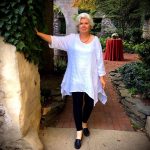
About Rhonda Fabian
Rhonda Fabian is Editor of Kosmos Quarterly. She is an ordained member in the Order of Interbeing, an international Buddhist community founded by her teacher, Thích Nhất Hạnh. Rhonda is also a founding partner of Immediacy Learning, an educational media company that has impacted millions of learners worldwide.
Healing Sound with Jesse Paris Smith
Healing Sound with Jesse Paris Smith
On Healing Sound
Kari | How did the ideas of healing and music come together for you? What is your first memory of the connection between music and sound therapy?
Jesse Paris Smith | My personal experiences of healing and music/sound go back longer than I can possibly remember! Their connection exists in the forms that affect us all, whether we are aware of it or not. In listening to different songs to match different moods and meet different needs, we follow our instinct and gravitate towards sounds and music based on how they affect us at any given time. The range of sounds and their effects on us are infinite! The soft healing of nature sounds, the energizing power and collective charge of a live concert, the meditative wonder of turning off the mind and playing an instrument.
However, the conscious and intentional connection of this work was ignited for me in 2008 when I attended a workshop with Joshua Leeds, author of one of my favorite books, The Power of Sound. It was from then on that I would dive into this world further be forever changed. In 2013, I enrolled in a nine-month program where I got to learn from many different experts and teachers who I still am learning from today.
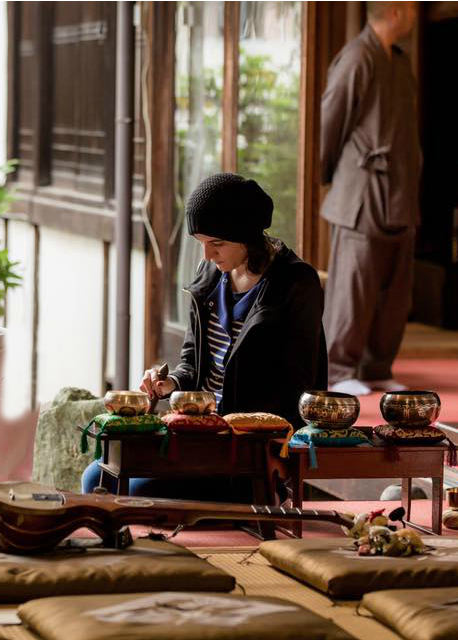
Kari | Do you think it’s the vibrations, the melodies, a combination of both, or is it tapping into something else that promotes the healing?
Jesse | It is everything. It is the influence that exists innately within the vibration of the sound waves themselves. It is the psychoacoustic effects of the qualities of the music. It is the intention of both the practitioner and the listener. Intention is highly important with therapeutic sound and music.
Sound and music are very powerful, and we as emotional beings are sensitive to what we hear. We do not only hear with our ears, but with our whole bodies. Sound is vibrational and can be felt through the skin and passed through the bones. Sound travels fastest and most powerfully through solid matter, then water, then air. We are also emotional and meaning-making beings; a specific sound or piece of music can trigger memories, feelings, and associations, affecting each person differently. Creating music and sound intentionally, you can be quite selective based on the effects that different qualities may have on the listener.
Faster tempos, complex rhythms, and high pitches can increase heart rate, intensify alertness, shorten our breath, and energize us, whereas slower tempos, simple rhythms, and low frequencies can relax our bodies, slow us down, encourage us to breathe deeper.
But every person’s body is different, everyone’s needs and desires are different, everyone’s memories and minds are unique, so all of this comes into play. And every person’s state of being varies on different days and throughout a single day, so their needs constantly change. There is a great deal of scientific research on the psychoacoustic effects of sound and many incredible books, articles, films, and experts to learn from. There are endless reasons why healing is promoted by sound and music.
A demo reel by Tree Laboratory, a collaboration between Jesse Paris Smith and Eric Hoegemeyer.
This short video was created by Australian generative artist and designer Jonathan McCabe, whose artwork converts information inputs into algorithms that direct movement of colour and pattern. Jesse Paris Smith and Eric Hoegemeyer, from New-York based Tree Laboratory, furnished the video’s haunting soundtrack.
Kari | The compositions you play for healing, are they of your own making? If not are they contemporary…ancient…where do they come from?
Jesse | There are contemporary pieces and ancient melodies for healing—there are medicine melodies, chants, vowel sounds, mantras. Different modalities are based on the intensive scientific study of specific pieces or genres of music. Experts like Dr. Pat Moffitt-Cook and Sylvia Nakkach have studied cross-cultural musical healing. Learning from them and others helps to understand just how vast and ancestral therapeutic sound is. Sound and music have been used in healing for thousands of years. Sound as a therapeutic modality has had various resurgences of popularity through the years and has developed further with new research and findings, but the reality is that vibrational medicine is ancient and universal.
Sound waves move in the air to change the vibration of the space with the ability to alter the entire room and anyone in it. Sound and music work on the body and mind, enhancing different brain waves and altering mood, emotional patterns, and state of consciousness. Sound waves promote the movement of energy, stir things up inside of us, tap into parts of us we hadn’t otherwise been aware of, retune us, and help us to work through and remove impediments. Intentional sound can be immediately effective, as a certain frequency, sound, or piece of music, can bypass the story and chitter chatter of our minds and go directly to where it needs to go, mirroring back to us our own state of being. Depending on the intention of the sound or music itself and the openness of the listener, the effects can be quite powerful. Music can help us to relax and relieve anxiety; to focus and concentrate; energize naturally; deepen our meditation; work through an impediment; ease our physical discomfort; help to process a myriad of issues; and assist in countless other ways. Pairing sound and music with other modalities and practices can be highly effective.
I feel it is equal parts knowledge and intuition. Knowledge as in learning what we can about the effects of different qualities (tone, tempo, pattern, rhythm, timbre, frequency, volume) in order to be responsible and confident. If you’re with another person, we gain knowledge through talking with them, learning about their state of being and what their hopes are, taking in as much information as is needed. As for intuition, it’s about being aware, feeling out the situation and trusting instincts to let us know where to go and what to do. There is so much room for improvisation, and like playing onstage with others, listening and being aware of what’s happening is what will make for a positive experience.
Kari | Can you share an example of what you have encountered and what an individual might experience during a therapeutic sound session?
Jesse | Speaking from my own experience as both a client or practitioner, it depends on the intention of the session. Sometimes a person will need passive sound, to be offered an experience to address a certain need. Sometimes what can be more effective than passive sound is active sound; the client or person creates the sound themselves (alone or with others) instead of being given a sound experience solely from another person. The benefits of active sound are vast, because a person creating their own sound is able to feel it deeper and more powerfully in and throughout their body which has a more profound and immediate effect on their systems. Practices of toning, singing, sounding, and even intentional talking exercises are highly effective forms of therapeutic sound and are tools we all have at our disposal that we can access at any time, whether we are at home, at work, at the dentist, riding the subway, or walking in the woods. Instruments, tools, and sound machines are great, but we also have our own voice which is possibly the most powerful tool there is and the biggest mirror for ourselves. For me personally, using intentional sound practices and working with a music therapist have both been very powerful in my own life and have helped me immensely, opening my eyes to new ways of experiencing the world and deepening my relationship with myself and the very ground I stand on. I guess the point of what I’m saying is that there are so many factors, options, needs, wants, intentions, that every individual person and every individual session can be different. It’s not so easy to describe the experience of the effects of sound healing and music therapy because it is more ‘felt’ than anything else.
“My mom and I performed this poem together at Carnegie Hall in NYC for the annual Tibet House benefit on March 5th, and we recorded it shortly after for His Holiness the Dalai Lama on the occasion of his 80th birthday.”
The track is sold via bandcamp and the proceeds benefit Tibetan Children’s Village.
Kari | What about live performance? Can listening to recordings be as effective as music that is performed live? Why or why not?
Jesse | Absolutely. The main difference between a recording and live performance is the element of the person-to-person human connection and the felt vibration of the instruments themselves. Recordings are very powerful because, like a live experience, there are still intentional sound waves being experienced, and when we hear music or sound—whether in person or on a recording—we are still entrained by what we hear. Think about all the reasons we go to different music. We listen to one kind of music when we are sad, another when we are exercising, another when we need to be comforted, and yet another when we are celebrating. Some music we prefer to listen to alone, whereas others are more enjoyable shared with people. Even though recordings, of course, differ from a live experience, they are highly effective. Think about the soundtrack of a movie, how the emotions and story are enhanced by the music and sound effects in the various scenes. There are certain instruments that are best experienced in person of course, such as tuning forks or singing bowls, and these can even be placed directly on the body for deeper healing. And there is something very special and energetically powerful about singing or toning in a group or with another person. However, sometimes you just want to put on headphones by yourself, close your eyes to relax, to sleep, to meditate, or get up and dance. It’s again all about what is needed, what is available, the state a person is in, really just so many factors constantly at play.
On Pathway to Paris and Conscious Activism
Kari | Please talk about Pathway to Paris and how music is integral to your climate awareness initiatives
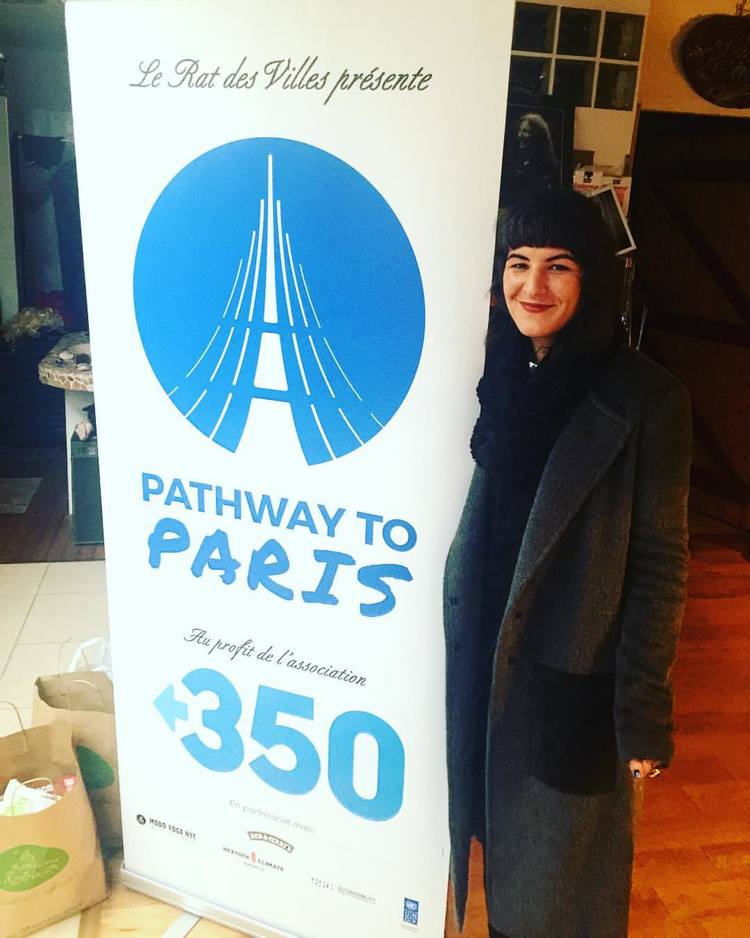
Jesse | Music and art are highly important in any movement and awareness initiative. Hearing and learning the facts, listening to experts, and engaging in social actions are vastly important. Music and art act as catalysts—a platform to bring more people together in order for action to take place on a larger scale. As emotional beings, music and art move us, open our hearts, ignite our inspiration, create a unity and oneness that is unique to this form. Music and art create community and collective unity. Like-minded people find each other, and a new wave of people are inspired to get involved for the first time or reminded to do their parts. People are moved and inspired every day by musicians, artists, and performers, listening to what they think and believe, and because of that, they hold a level of power in their hands. A performer who uses their unique platform to call citizens to action is taking that power to another level, harnessing it for good. We have seen this throughout history and across the world. Everyone has an entry point to climate action, and for many, it is through the inspiration of music and art. Not everyone who comes to our events is there because they are concerned about climate change. They might attend because their favorite singer is performing. Hearing this singer encourage them to join in taking action, and having the chance to hear from an expert, politician, scientist, or activist, the attendee hopefully will leave the concert feeling charged as a warrior for the planet, equipped with new facts and tangible actions to share with their community. These concerts are also a chance for musicians and artists to find their role in the movement, realizing the influence they have and the change they can inspire. We work to help people of all walks of life identify their role in this movement, no matter what their entry point to it is.
Kari | How has your experience with climate change impacted your music and life?
Jesse | I have always loved nature and the outdoors, but when I was 15 and I learned about global warming, it terrified me and I decided then that no matter what else I was interested in life that I must dedicate myself to helping raise awareness and combatting this urgent issue. I can’t really ever know who I would have become and what I would be doing if it weren’t for this urgent crisis our planet has been facing and this movement we have had to build. There hasn’t been a day in 16 years that I haven’t thought about climate change, so in some form or another, it is present in everything I do and every choice I make. In moments when I’m not making the best choice for our planet, there is always a voice in my head reminding me the impact I’m having, and these experiences are always a chance for reflection. So much about our world is built for convenience, easier routes, avoidance, and instant gratification. and There is so much need to review our own habits, see how we can shift our lives to do better for our world, let go of old habits, develop new ones, to lead by example. I like to ask myself and others, ‘What are you doing for our world, and how can you do more? What can you do better?’ Just like music, climate change has made me more appreciative of the importance of community, connecting, and collaborating. I really like being alone, and both music and climate action are so much about connecting and sharing with others. Climate action, like any movement, is most effective and powerful when we build our numbers and stand strong together. The way to solve climate change is through local and global collaboration—unity.and so It is really a rallying call for world peace. It is a global crisis of immense urgency, and it is painful that the entire world didn’t come together long ago to effectively come up with ambitious plans to combat this. We should be so much farther along in the movement to transition into an era of 100% renewable energy, but there is just so much greed in this world. As Bill McKibben said at our 2015 Paris events, “The scientists of the world did their part, and the politicians are still not doing very much. They’ve been willing to be dominated by the fossil fuel industry and so we’ve had to build this big movement – we should not have had to build this movement. If the scientists of the world say that the worst thing that’s ever happened is happening, then in a rational world, we’d quickly go do something about it.”
But the movement we have built through marches, protests, rallies, concerts, events, letter writing, petitions, videos, campaigns etc. is what has made the politicians start to listen up and take action. Every month it becomes more and more urgent, and so the number of citizens taking action needs to continue to build exponentially so that politicians and corporations will listen up and take more action. We have to say it loud and clear in every way possible that we want a world free of fossil fuels, that we want to reimagine our cities into green, healthy, eco-cities running on 100% renewable energy. When we are silent, we are part of the problem.
Kari | As a warrior for the Earth and the wellness of her inhabitants, what keeps your sword sharp? What heals, recharges, and reactivates you to keep you so positive and engaged?
Jesse | I love being in nature. I love to explore and learn. One of the things Bill McKibben reminded me is that in addition to fighting tirelessly for our Earth, we also need to enjoy it, even in moments when we need to be ‘witness to the fleeting.’ My whole life I have been a passionate admirer of the outdoors—I love the water, forest, beach, parks. I really love hiking and camping. I also just love walking, exploring, discovering new places, even in the cities where I live. It is important for me to constantly check in with myself, reflecting on my states of being: emotional, physical, mental, spiritual. Self-care is about looking after all of your states and systems and treating them each with equal care, seeing which one, if any, seem to be low and in need extra attention. I love moving: walking, biking, running, pilates, cardio, kayaking, dancing, frisbee, stretching, playing catch, etc. I really love reading books and learning, taking classes and workshops, doing cultural activities that inspire new thinking and actions. I try to push myself to step away from my computer, phone, and social media, though it can be very difficult. I love to eat nourishing and healthy foods, but allow myself to enjoy some not-so-healthy foods, too. I really love tea. And of course is so important to get enough sleep every day and drink tons of water. Sometimes I don’t drink enough water, and I always feel better when I remind myself to. Anything we can do to help ourselves is important. I think it’s just about finding the things that resonate with us, and that is discovered by trying new things.
The element of the sound and music is highly recharging, reactivating as well. Taking the time to meditate, take naps, do sound exercises, sing, play piano, listen to music, watch a fun TV show or movie. Being with friends and family, talking on the phone with loved ones, visiting with people, making new connections. Spending time with animals and beloved pets. Creating, any kind of expression, and doing so not just for work, but just to create without judgement or expectation. Writing, journaling, playing music, singing, drawing, doing any sort of craft projects. I love writing, and journaling is such an important part of every day and is nice to reflect on later, too. Remembering to laugh, to do silly things, to act like a little kid. The world can feel so dark, so intense, so deeply frightening. These actions of self-care are not to escape reality, not to avoid the truth, not to pretend that everything is happy and positive, but they are to remember to stay hopeful and to love and enjoy life. Moments are all we have. Anything we can do to stretch our moments, to make them last, to pause constantly to fully appreciate what is around and within us. Without our moments, we are just drifting through time and space.
Follow:
https://www.jesseparissmith.com
https://www.pathwaytoparis.com
Facebook: https://www.facebook.com/pathwaytoParis/
Instagram: https://www.instagram.com/pathwaytoparis/
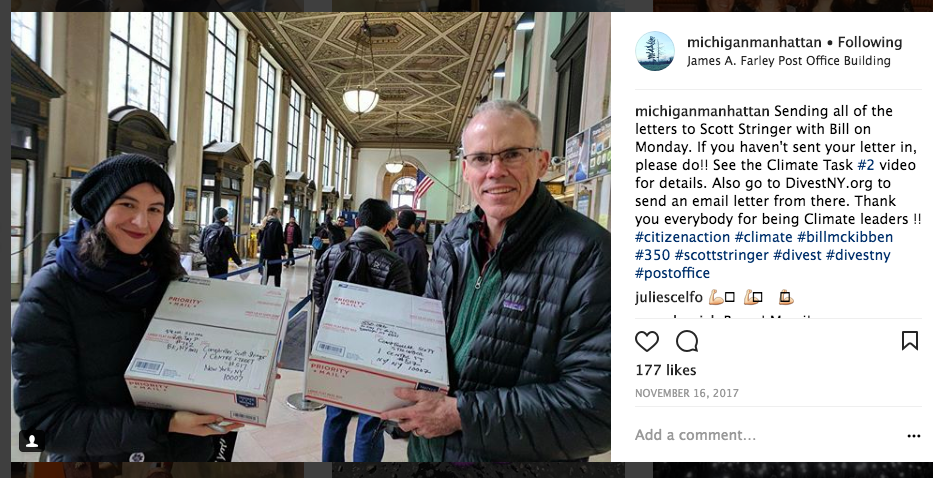
Jesse loves to include a call to action at each show. She and Bill McKibben appealed to everyone in the Carnegie Hall audience to write ‘divest now’ letters to New York City Comptroller Scott Stringer on a blank piece of paper provided in the show’s program booklet. These were collected and sent by Bill and Jesse.
Join 1000 Cities: Reject Fossil Fuels and Move to 100% Renewable Energy.
Sign the Petition care2.com/1000cities
Pathway to Paris Highlights - Dec 4th 2015, Le Trianon, Paris (edited)
Moving Forward: Pathway to Paris

About Kari Auerbach
Kari Auerbach is Music Editor at Kosmos Quarterly. She grew up all over the world learning about music and working as a jewelry designer. Currently living in New York City, she is social media director for several recording artists and a jewelry instructor for the New York Institute of Art and Design. She enjoys her many roles as a teacher, artist, mother, mentor, as well as advocating for artists, children, and a better, cleaner world.
Consumption As The Path
Consumption As The Path
Walking downtown today, I skipped over a homeless guy sleeping in the alley. All his stuff was there with him. He was passed out on top of most of it. There was the collection of junk, a shopping cart, his sleeping bag, and the proverbial puppy wagging its tail. I stopped and glanced over both of them. (Why do the folks that can’t take care of themselves always want a puppy? Love is a double-edged sword.) Strewn around him were three or four empty bottles of fire water he had consumed the night before. He was ‘consumed’ as they say.
I tried booze as a solution for about twenty years as well. I never wound up homeless, passed out, and living in an alley with a new puppy, but I know that I’m lucky. I could have easily ended up there. I know it’s only by the luck of the draw that I did not. My consumption ran its course on that level before homelessness happened. A moment of grace stepped in. It washed over me in the shape of a moment of clarity that I could not deny. Maybe that guy will have his moment of clarity too, but that’s really none of my business.
I know there is a solution, but that solution only led me to the futility of consumption at deeper levels. After the possibility of the drink was exhausted, I had to run the gauntlet of many more possibilities. It’s taken a lifetime of experimentation to realize there was no way of filling the God-sized hole of my inner world from the outside. It’s what’s supposed to happen. This is the spiritual path. People think that the spiritual path involves a lot of things—ideas, beliefs, love, church, surrender, acceptance, being good or righteous—including spiritual practice. But the most important thing that the spiritual path reveals to me is the exhaustion of the possibility of consumption as a finite solution to the problem of our infinite existence. I had to consume everything. I had to try every possible avenue of filling the God-sized hole from the outside before I could even fathom the possibility that the emptiness and energy swimming through the cosmos was the same emptiness and energy swimming inside of me. Only then did I start to experience myself as union, as yoga, as meditation—as the spark of the mantra itself.
They say we must rid ourselves of desire. They say that desire is the problem. But really, desire is the solution. Desire is longing’s tool. The first reality is that there is a wound, and there is suffering—a deep sense of dissatisfaction with life. There is something in us that just wants a little bit more. There is something within us that feels incomplete. It’s like having a little piece of meat stuck in a back molar that you just can’t get out. We act on this feeling of dissatisfaction to no end, trying to solve the problem from the outside in. It’s the path itself. When self-inquiry is put into motion, it’s the train we can’t get off. What we are doing is trying to become one with something. We are trying to experience ourselves as complete and whole. What’s that something? What’s the separateness? Science tells us we are all one. We can do a math problem and see it in front of us on the paper but still, we experience ourselves as separate.
I’m an addict and an alcoholic. My first attempt at satisfying this longing was through substances. When we try to satisfy this longing through substances, we call this addiction. As soon as I exhausted the possibility of satisfying the longing with substances, I tried to do it through relationship or sex—when this longing finds its expression in the physical, we call this sex. We desperately try to complete ourselves by becoming one with another. It might last for a while, but eventually we fall apart and smoke a cigarette while listening to the last few songs of that Sade CD. We exhaust that as a possibility as well.
After the cigarette and some coffee, I got on the subway and tried to solve the problem mentally. When we try to solve the problem or dilemma of separation mentally, we call this greed, conquest, or ambition. I will propel myself wholeheartedly toward a solution with my will. I found myself in the trap of trying to complete myself through my career. I raked my ‘Love Me’ cup on the jail bars of life for years thinking that if I could just get 100 people standing in line waiting for me to sign a CD and tell me how great I was, then that would complete me. If I could just make a living doing what I love, I would ‘arrive’ and feel whole.
Well one day it actually happened, and I tell you, it was the happiest and saddest day of my life, both at the same time. The happy part was that it happened. The saddest part was that it didn’t fill the God-sized hole. It didn’t complete me or remove that chunk of meat from my back molar. I had to consume everything in that realm and exhaust that as a solution to my problem before I could move on. I had to experience it for myself. I could listen to a Beatle talk about how fame and fortune wasn’t ‘it,’ but until I experienced it myself, it meant nothing.
The last thing I had to exhaust was the possibility of love. Yes, I said it—love. The emotional aspect of love. When this longing expresses itself emotionally, we call this love. Recently for me, this has been a big one. What I thought of as love was just an expression and feeling of my own emotional neediness to find wholeness through another. But emotions are fleeting. They are a bridge between the physical and non-physical world. The problem is that whenever there is some kind of exchange or trade off going on, this isn’t love. It’s something else entirely. People die as well, they move on, they live far away behind borders and the bars of their own countries and psyches. This kind of love still cannot transcend the physical world. Love, you say? Love? Really?
I love what Leonard Cohen had to say when asked about it.
“What about love, though?”
I believe we know that love is a terrible wound itself and that it presents a bewildering landscape to stumble over. Love is a fire: it burns everyone, it disfigures everyone, it is the world’s excuse for being ugly.
I think in people’s hearts, they understand that the heart is cooking like a shish kebab in your breast. No matter what you do, the passions come and go, and they sear you, they burn you. If it’s not your lover, it’s your children. If it’s not your children, it’s your job. If it’s not your job, it’s growing old. If it’s not growing old, it’s getting sick. This predicament cannot be resolved. That is the wound that does not heal, and rather than approach it from the point of view of stitching or cauterizing it, there is wisdom in living with the wound.
The same goes with acceptance and compassion. We have to exhaust all possibilities. Once we have exhausted all the possibilities, we get to the experience of living life beyond consumption or closing the wound as a solution. As we have had an experience that consumption is futile.
I’m an experiential guy, a hard nut, a yogi. I refuse to believe anything beyond my own experience. What I’ve experienced through the path of consumption is that the hole can’t be filled. We are the hole. The polarities and opposites that come together to manifest the physical world come with an energy that creates this feeling of incompleteness. This energy is the truth of reality itself. Reality is not complete. The rub of opposites creates an impermanent physical form that we call the world, and it’s a living, breathing expansion that is the impermanent us. The feeling of wholeness comes from realizing incompleteness. Failure is success, good is bad, and eventually, the rain is no different than the sun. Whether in failure or success, the result is the same. Duality is transcended. It all just is. Here, we start to experience the part of ourselves that is beyond name and form. It’s the part of us that exists beyond the five senses.
This is why in the first yoga a sutra it says “and now yoga.” Why? Because we have tried everything else. We have exhausted the possibility of consumption as a solution.
Of course, there is a bigger fish to fry than our own karma. There is collective karma as well. But at least at this personal level, we can start to experience ourselves in a different, more profound way. Our energy flows differently here. Our minds start to evolve and shape themselves in a different way when there is no resistance to this feeling of separateness brought on by trying to solve the problem of the wound.
Looking back at the drunk homeless guy, all I can see is myself. Here I find compassion. I see the hopeful puppy wagging his tail against his sad eyes, and I can relate. Somewhere in there lies a solution that is profound and that no one seems to be talking about. The streets are filled with trash. The wind blows it down the block. I can feel the fall blowing in. The state of the Earth is no different from the drunk guy. It’s Sunday. I think it’s gonna rain.
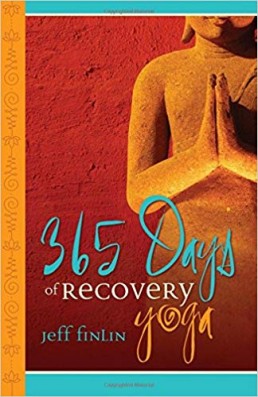
Excerpts from 365 Days of Yoga
All I am attempting to do in this daily reader is share some of the things that stuck with me along the way. Herein lay little nuggets of knowledge related to my own experience that have come to mean so much to me. – Jeff
In the end, meditation is not something you do or practice.
How can you practice who you really are? Meditation is not
something you do.
It is experiencing your fundamental state of being. It’s
beyond the cause and effect of doing something.
We do our practices to experience the space within.
We become meditative.
Craving
In our addictions we have hot wired our minds and bodies.
If we are lost in our craving, we can be sitting in the most
beautiful situation and still we are not able to see it. Can we
develop the awareness to see how our addictions and cravings
manifest themselves as a separate voice in the mind and body? If
a man starts talking about the feelings associated with drinking,
a slight ping goes off in my head.
Can I notice it without reacting to the thought?
Can I pause when agitated like this?
This is important to notice.
Giving and getting
What happens when you get something?
How long does the feeling last?
What happens when you give something?
How long does the feeling last?
The Opening of the Heart
After a lifetime of protecting my heart, I came to a point where it could not do anything but open.
The resulting onslaught of tears and emotions over the next couple of years, sometimes seemed overwhelming.
I thought I was crazy.
I would fall apart at the drop of a hat.
I’m so grateful to warriors who went before me.
I was able to validate my experience through theirs.
What a gift.
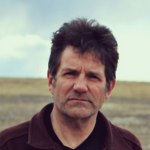
About Jeff Finlin
Born in Cleveland Ohio, songwriter and writer Jeff Finlin was the grandson of Irish railroad workers. Jeff has parlayed the insatiable urge to travel into a catalog of 15 records. His song “Sugar Blue” was featured in The Cameron Crowe classic film Elizabethtown. Jeff has struggled with addiction to alcohol throughout his career. It was not until he paired AA with yoga that he felt his recovery truly began. In 2017, Jeff, newly certified as a Yoga for Recovery Counselor, founded RecoverYoga, a therapy and consultation program. Jeff has written two books of poetry and prose and a book on yoga and recovery. He has written extensively for the East Nashville Magazine and has been published nationally in American Songwriter. Visit www.jefffinlin.com for more.
Books in Brief
Books in Brief
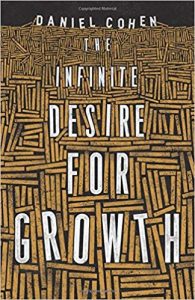 The Infinite Desire for Growth
The Infinite Desire for Growth
Daniel Cohen
Princeton 2018, 165 pp., h/b.
The author is Director of the Economics Department at the Ecole Normale Superieure in Paris, so this book has been translated from French. As such, it draws on French as well as English and US sources, something one rarely finds the other way round. It is a stimulating book of wide scope drawing on a range of disciplines. Starting from the premise that economic growth and the hope of better things to come embodied in the Enlightenment idea of progress is the religion of the modern world, the author traces our history and key turning points in our development including agriculture, persisting hierarchies, the invention of money, the industrial and scientific revolutions, and the emergence of autonomy and free expression. Along the way, he contrasts Western with contemporary Chinese empires, observing that Western powers were in a state of permanent war in building empires and exploiting resources. Our economic development has permitted a population explosion, but we are in the process of going through a demographic transition to stable levels thanks to the education of women and influential examples widely seen on TV.
Questions around labour, productivity, automation and wages are very current, especially since 2008. Here the author takes a rather longer view, showing how middle-class incomes have been stagnating over the last 40 years, and pointing out growth may be underestimated due to the widespread provision of free services over the Internet. Ecologically, we have entered the Anthropocene era but still with our old mentality of separate nation states and their interests. The author takes the view, which I share, that humanity is not yet up to the task of solving global ecological issues and that sufficiently far-reaching collective action is unlikely solely through evoking risks to the planet. We therefore need to rethink progress and look for successful social models such as Denmark. The key issue here is what the author calls the extraordinary malleability of human desire in the light of the Easterlin paradox: first, that wealth does not correlate well with happiness, and secondly, that while a higher salary is obviously desirable, ‘yet once we have reached that target, it is never enough’ due to habituation and comparing ourselves with others. Our needs are relative, and we don’t want to fall behind our neighbours. Moreover, even while the planet strains under the collective human impact, millions of people aspire to Western lifestyles, for which we would need the resources of four planets.
In view of this situation, one has to ask how likely it is that the author’s desirable recommendation of a transition from quantity to quality will occur. This is all very well in advanced countries, but even there people are unwilling to give up what they already have. However, there is increasing support for moves away from GDP towards a focus on well-being. He thinks that attitudes are transformed ‘when individual aspirations and social needs converge towards the same goal’ (p. 152), which entails a new sense of community and solidarity, moving from individual and social levels to that of the species and the planet. Ecological thinkers have already arrived there, but most economists and politicians lag behind – hence the race between education and catastrophe. This book is a thoughtful wake-up call that helpfully contributes to our education and potential transformation.
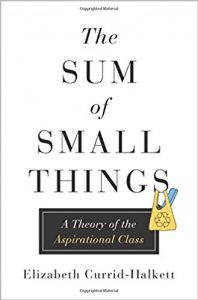 The Sum of Small Things
The Sum of Small Things
Elizabeth Currid-Halkett
Princeton 2017, 254 pp., h/b.
In 1899, the Norwegian economist Thorstein Veblen published his book Theory of the Leisure Class, where he coined the phrase conspicuous consumption. The author reflects on and updates these trends with her idea of the aspirational class as one highly educated and defined by cultural capital rather than income bracket – people whose values and lifestyle lead them to buy organic heirloom tomatoes from the farmers’ market and breastfeed their babies. These are examples of ‘inconspicuous consumption’, and this class uses its income to pay for domestic help, educational advantage and private yoga or music lessons – all of which passes on the cultural capital in terms of advantage and is therefore a trend against equality of opportunity. A telling example is the use of the phrase ‘kitchen supper’, which implies that you also have a dining room that you use on more formal occasions. Indeed, the dinner party and its fashionable topics of conversation also implies a certain background, and our upbringing is manifest in terms of how we hold our cutlery and whether or not we put milk into our tea before or after pouring the tea – apparently this was originally due to the poor quality of crockery used by less privileged people.
The analysis draws on original research, with many informative graphs and tables. Some products like Ballet Slippers nail varnish – a new one on me – are not expensive but reflect the underlying assumption that it is natural to look after one’s nails. Then there is conspicuous production, for instance choosing fair trade and ethically sourced coffee. In deciding where to place a new store, the main criterion for Whole Foods is apparently the density of college graduates within walking distance. These graduates are educated and informed, and this is reflected in their shopping habits, as implied above – another example would be the choice of an electric or hybrid car. Interestingly, the middle class spends more as a percentage of income on conspicuous consumption than the top percentiles, which reflects the extent to which previously exclusive products have become widely available. However, the author also highlights the caveat that income level and happiness are not correlated beyond an annual $75,000. She concludes by observing that these lifestyle choices are simply not an option for huge segments of society and that there is an element of narcissism in the aspirational class whose habits reveal who they are.
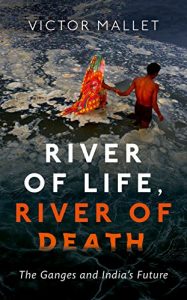 River of Life, River of Death
River of Life, River of Death
Victor Mallet
Oxford 2017, 316 pp., h/b.
Victor Mallet is an FT journalist who is based in New Delhi between 2012 and 2016, which gave him a chance to research and write this brilliant and fascinating book about the Ganges, covering, as Lord Stern observes, history, geography, environment, politics and religion. The title indicates the thesis, also passionately advocated by Swami Saraswati that if Ganga dies, India dies. If Ganga thrives, India thrives. The lives of 500 million people are not a small thing. In his view, it will be a journey from filth to faith. It is striking to read historical accounts when the river was much less polluted than it is now, but it turns out that its sacredness and the purity associated with this is one paradoxical factor that has held back the necessary action to clean it up. The scale of the challenge is daunting, especially in view of continued population increase (300 million in 1947, 1.3 billion in 2016 and a projection of 1.7 billion by 2050) and the chronic lack of proper sewage and toilet facilities with severe pollution implications for every river, not just the Ganges. Population pressure also impacts water supply, and the author demolishes the argument for a demographic dividend. He discusses parallels with the cleaning up of the Thames and the Rhine, but the challenge of the Ganges is an order of magnitude greater, as Prime Minister Modi realises. Not only the essential cleanup, but also the fact that 70% of the flow of Ganges consists of meltwater from the Himalayas, where the glaciers are in the process of disappearing. The author has performed a great service by highlighting the scale of the problem as well as conveying the overall significance of the Ganges for India and its future.
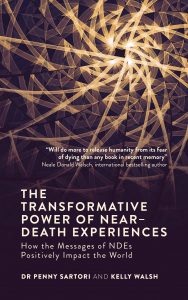 The Transformative Power of Near-Death Experiences
The Transformative Power of Near-Death Experiences
Dr Penny Sartori and Kelly Walsh
Watkins 2017, 256 pp., p/b.
I read the manuscript of this remarkable collection of transformative near death experiences a few months ago and found it a powerful and transformational read. The many different accounts converge on some key themes of self-love, acceptance, forgiveness and renewal. Underlying all this is the realisation of Oneness and deep interconnectedness characteristic of love. This is exactly the experience and message of the well-known books by Anita Moorjani and Eben Alexander, both of whom endorse the book. There is a foreword by Mick Collins, whose new book I have also endorsed and who sees the content of this book as a love letter from God. Then there is a profound prologue by Neale Donald Walsch: his own experience converges with the core message of the book: ‘I am not my body, I’m totally loved and absolutely perfect just as I am, I am one with everything, and everything is really simple. The reality of an interpenetrating spiritual world shines through the narratives and we are reminded that a deep intuitive knowledge is available to all of us. Ultimately, this involves a re-identification with a deeper aspect of the self and the realisation that there is no separation between us. Although such messages have appeared in previous books, including my own Whole in One and Lessons from the Light by Kenneth Ring and Evelyn Elsaesser, the appearance of this book is particularly timely view of the widespread search for meaning. Readers cannot fail to be deeply touched by these narratives.
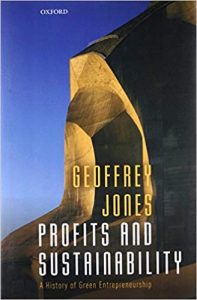 Profits and Sustainability
Profits and Sustainability
Geoffrey Jones
Oxford 2016, 442 pp., h/b.
This engaging and authoritative history of green entrepreneurship shows that its origins go far further back than most readers will realise, to the mid-19th century. The author traces the often eccentric lives and ideas of green pioneers in organic food, vegetarianism and energy, including Rudolf Steiner, who impacted food, agriculture, medicine and design. Wind energy in its modern form goes back to the 1850s, and by the end of the First World War Denmark had 250 electricity producing wind turbines, while the first solar company was formed in 1892. The book proceeds chronologically through the 1930s to 1950s, then to the rise of green business in the 1970s, including recycling and ecotourism. Since the 1980s, the growth of green businesses has been accompanied by a major shift in attitudes towards the natural environment and a corresponding proliferation of green institutions and certifying agencies. Another chapter is devoted to green finance, such as the Triodos Bank, and government initiatives, then the features and limits of corporate environmentalism. Many of the original green entrepreneurs were motivated by romanticism, but they were also the historical originators of a sustainable world for the future. Reverting to the title, the author concludes that profits and sustainability have been hard to reconcile but the whole process has brought into the foreground the need to address major ecological issues and redirect policy, especially in relation to food, agriculture and energy.
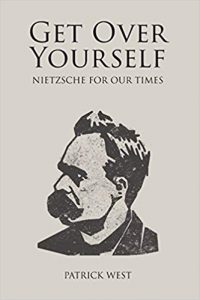 Get Over Yourself – Nietzsche for our Times
Get Over Yourself – Nietzsche for our Times
Patrick West
Imprint Academic 2017, p/b.
As the subtitle indicates, this book is not just another introduction to Nietzsche, but rather a thought experiment in how he would respond to our digital era of identity politics, therapy culture, religious fundamentalism and envy politics. His influence on leading 20th-century thinkers has been immense, and the author characterises him as a prophet of moral revolution advocating the destruction of everything decadent and life-negating while preaching liberation, originality, reinvention and self-creation. Everywhere he challenged prejudices and received opinions, urging us to transcend ourselves and live dangerously. The first chapter gives an account of his life, which is followed by a series of chapters identifying and criticising contemporary cultural themes: it is invigorating stuff. It is fascinating to learn that the First World War pushed sales of Nietzsche’s books to new heights, with 140,000 copies of Thus Spake Zarathustra sold in 1917 alone. He advocates individualism without narcissism, involving action and perpetual striving in a process of self-overcoming; he prefers struggle to happiness, freedom to safety, nobility to conformity – all of which requires courage. One cannot envisage him liking posts or the artificiality of much digital communication. The book shows how he can act as a tonic and inspiration to live our lives to the full and without fear.
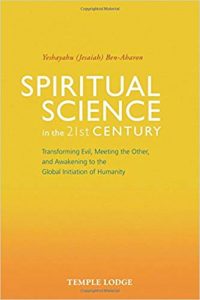 Spiritual Science in the 21st Century
Spiritual Science in the 21st Century
Yeshayahu Ben-Aharon
Temple Lodge Press 2017, 297 pp., p/b.
Ben-Aharon is a spiritual scientist, philosopher and social activist living in Israel, who is also the co-founder of the Global Network for Social Threefolding. The book consists of 13 lectures given in the arts of the world from 1997 to 2012 on a wide variety of topics: spiritual science in contemporary philosophy, changing self-love into world thinking, the working of Christ in apocalyptic conditions, Israeli civil society and the global melting pot of the clash of civilisations, the global initiation of humanity and education. The author is exceptionally well informed across a number of disciplines, and an important consideration is the spiritualisation of thinking, taking as a point of departure Steiner’s Philosophy of Freedom, ultimately representing not analysis but transformation, and wrestling with the riddle of spiritual nature of the human being in relation to the problem of immortality. The author shows himself a realist in political terms and has no illusions about the current world order with its pragmatic power-seeking. However, he has faith in the ultimate power of love and talks about a spiritual rather than technological singularity when we finally identify with our higher nature. In addition, we can transcend narrow nationalism by embracing our identity as global citizens and transform our educational systems so that people take more responsibility for our collective future. A stimulating volume.
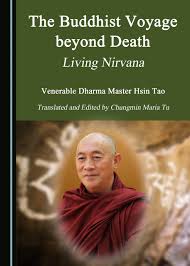 The Buddhist Voyage beyond Death
The Buddhist Voyage beyond Death
Ven Master Hsin Tao
Cambridge Scholars 2017, 150 pp., h/b
I imagine that few readers will have heard of the work and teaching of the Chinese Buddhist monk Hsin Tao, but this book is a real jewel. Born in 1948, Hsin Tao put himself through an intensive training, including two years in a cave and meditating in a graveyard. This is not for the fainthearted. The fundamental truths of Buddhism are clearly articulated – suffering, emptiness, impermanence – but also the cultivation and promotion of self-less-ness and goodness. Life and death alternate as we are reborn in new though impermanent forms with opportunities for further transformation: ‘death and rebirth is one thing. Death itself means the rebirth of life’. (p. 39) Hsin Tao translates some teachings into modern metaphors, for instance the memory matrix and the idea that death is a change of channel. It is this memory matrix that is reborn, and we are constantly sowing new seeds as thoughts as we create and recreate ourselves. Individual lives are like files or folders.
He has a very interesting teaching on time and space, which he says appear different at first sight but in the end are not so different: ‘space is unmoving time and time is moving space.’ We can easily get caught up looking at changes in time, ‘rather than looking at the stillness of space, an unmoving space…. which is also emptiness.’ This sense of emptiness and spaciousness seems to correspond to pure consciousness. The first part is devoted to deathless spirituality, then the second to death and dying, and the third to the creative now. Some of the valuable teaching about death and dying is given in the form of a dialogue, along with the lessons in detachment that we will have to undergo. Hsin Tao emphasises the importance of preparing for death, which few of us address. In his view, meditation is a key preparatory practice that can also bring us to a state where our mind is more ordered and less fluctuating. This means that we will be able to face death with greater equanimity. The ultimate development is that of the bodhisattva embracing all sentient beings. This is precious teaching for our time.
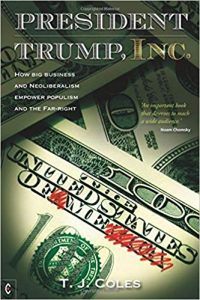 President Trump Inc.
President Trump Inc.
T.J. Coles
Clairview Books 2017, 208 pp., p/b.
In this meticulously researched book, the author investigates how big business and neoliberalism have empowered populism and the far right, in spite of their supporters failing to realise that the interests of powerful and rich are in fact being further served by their votes. For many years, business has lobbied government for favourable changes in legislation, but now some of these moguls are actually in Trump’s cabinet. Far from clearing the swamp, he is in fact filling it up, giving posts to executives in Goldman Sachs who should probably be behind bars for swindling their customers. We can already see the results, especially in dismantling of environmental legislation and withdrawal from the Paris agreement. The book is in two parts, the first about the background in terms of the rise of neoliberalism and corresponding decline of the unions, then the emergence of the far right in both America and Europe, followed by the more recent billionaire populism of alt-right. The second part explains the ‘Trump deception’ in more detail.
Neoliberalism has driven deregulation of financial markets and privatisation of public resources, which has resulted in growing inequality, falling living standards and social cutbacks. This has naturally led to disillusion with mainstream politics, with different emphases depending on continent and country, but nevertheless correlated with the rise of the far right. As the author points out, the paradox is that these parties actually support the very policies that lead to voter impoverishment. A number of myths are exploded, for instance that Trump won (he lost the popular vote, like George W Bush in 2000), that he won the working class vote and that he is anti-establishment. A separate chapter is devoted to trade deals and tax reform, then another to foreign policy, dominated in the long term by US commitment to Full Spectrum Dominance in world affairs and driven by the CIA and the Pentagon (p. 135). The author concludes that President Trump is what happens when business replaces politics. He sounds a note of hope in his conclusion, having shown polls indicated that Bernie Sanders would have beaten Trump, by saying that we all have to become active in local politics, which itself has to be democratised – in other words, system change can only come from below.
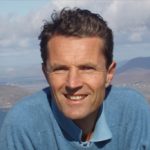
About David Lorimer
David Lorimer, MA, PGCE, FRSA is a writer, lecturer, and editor who is Programme Director of the Scientific and Medical Network. He is also President of Wrekin Trust and Chief Consultant of Character Education Scotland. He is also a former President of the Swedenborg Society and Vice-President of the International Association for Near-Death Studies (UK). Originally a merchant banker then a teacher of philosophy and modern languages at Winchester College, he is the author and editor of over a dozen books, most recently The Protein Crunch (with Jason Drew) and A New Renaissance (edited with Oliver Robinson).
May Everything Flower
May Everything Flower
Que Florezca Todo
May Everything Flower
– Roberto Lopez Moreno
What bitter memories lie dormant
in the earth. We are surely not innocent
of the ghosts at Tlatelolco or roaming the streets
of Chile and valleys of Colombia.
There is an empty space in our brain where the rest
of our body should be, an empty lot where nothing
grows, not even disdain or arrogance.
Nothing.
Beneath that lot lies the School of the Americas,
the KUBARK manual, and the directives of Henry Kissinger.
Lies paramilitaries and electroshock machines
and, collaborating with all of that, willful ignorance.
And Whiteness in the roots – a parasite that keeps
us alive while it eats us.
May everything flower –
even the memories that may accuse us,
might broil in our stomachs, catch in our throats,
might burn into the empty space in our brain,
might wrest us with the responsibility
to pay attention and destroy what pretends
to serve us – border walls and mass-produced fear.
Que florezca todo.
Todo.

About Liliana Torpey
Liliana Torpey was born in Berkeley, CA and grew up in Oakland. She is curious about themes of identity, history, and personal and collective healing. Liliana has performed street theater in the Tijuana/San Diego Borderland and has trained in Theater of the Oppressed at the Center for Theater of the Oppressed in Rio de Janeiro, Brazil. She has also published articles in Prospect, Journal of International Affairs at UCSD. Liliana received her B.A. in International Studies: Literature from UC San Diego.


